

For our last two days in Australia, we decided to explore some of the attractions located in the greater Melbourne region of Victoria. We traveled on our first day to Phillip Island on the southern coast, an area known for its dramatic beaches and its natural wildlife in the form of penguins. This was the place to visit the "Penguin Parade" and see hundreds of the little birds as they came ashore. For our last day in Australia, we took things easy and drove out to the wine country in the Yarra Valley. Located to the northeast of the city, this is considered to be one of the top wine growing regions in the world, and there were literally dozens of different wineries where we could sample some of the local vintages. It was a relaxing way to wind up the hard traveling that we'd done over the previous two weeks before another lengthy series of flights back to the USA.

Here's a map of the greater Melbourne region in terms of where these places were located. Phillip Island could be found to the southeast of the city along the waters of the Bass Strait, about a two hour drive from the downtown portion of Melbourne. The Yarra Valley was a bit closer, located to the northeast of the city out beyond the suburbs where the dense network of residential neighborhoods gave way to rolling hills and farm country. (It's the area where "Yarra Glen" is listed on the map above.) We had poor weather as we drove south towards Phillip Island on the initial Tuesday morning, lots of rain pouring down underneath an overcast sky. That didn't bode well given that we were going to be spending virtually the whole day outside; hopefully the worst of the weather would pass us over.
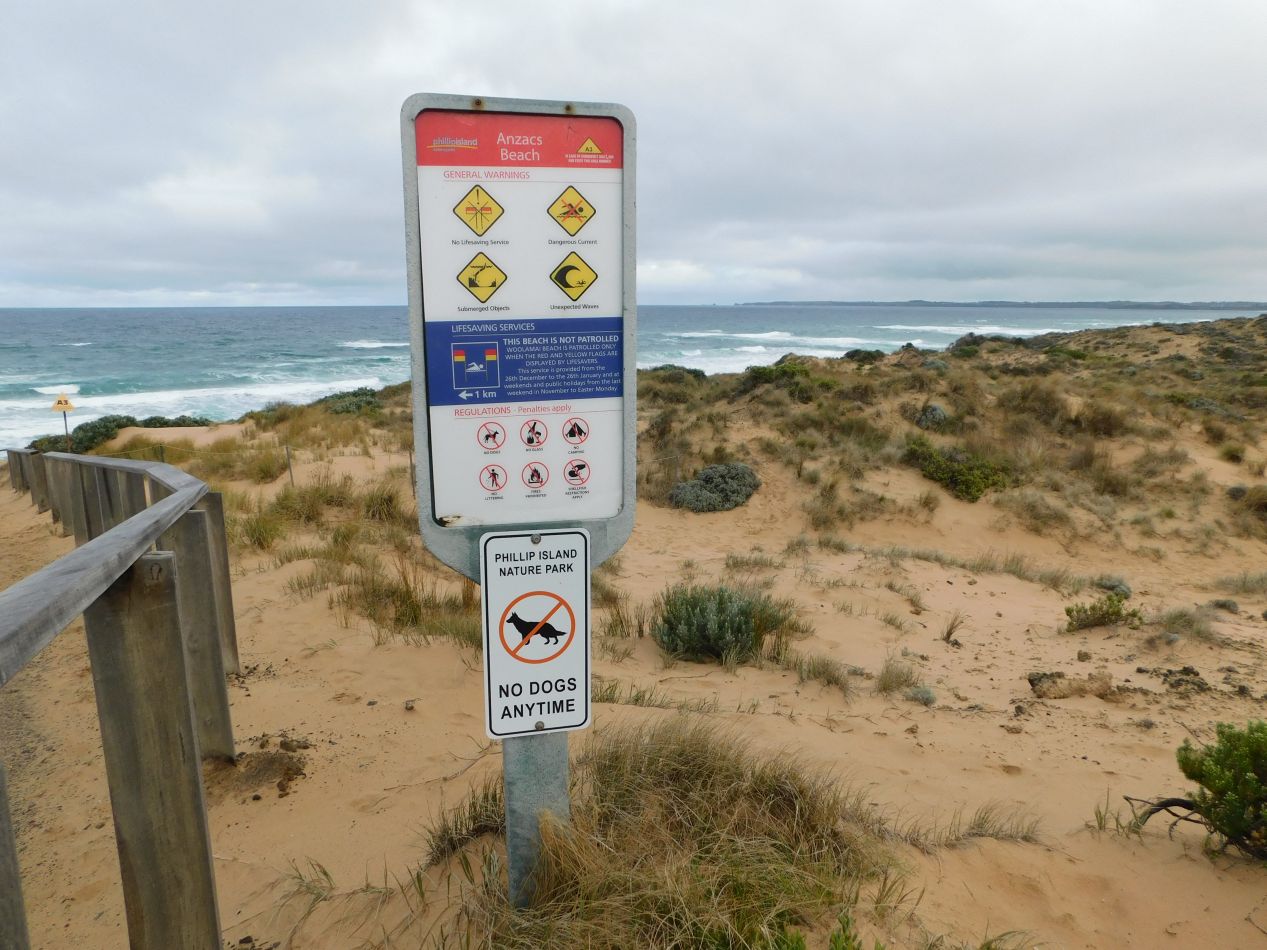

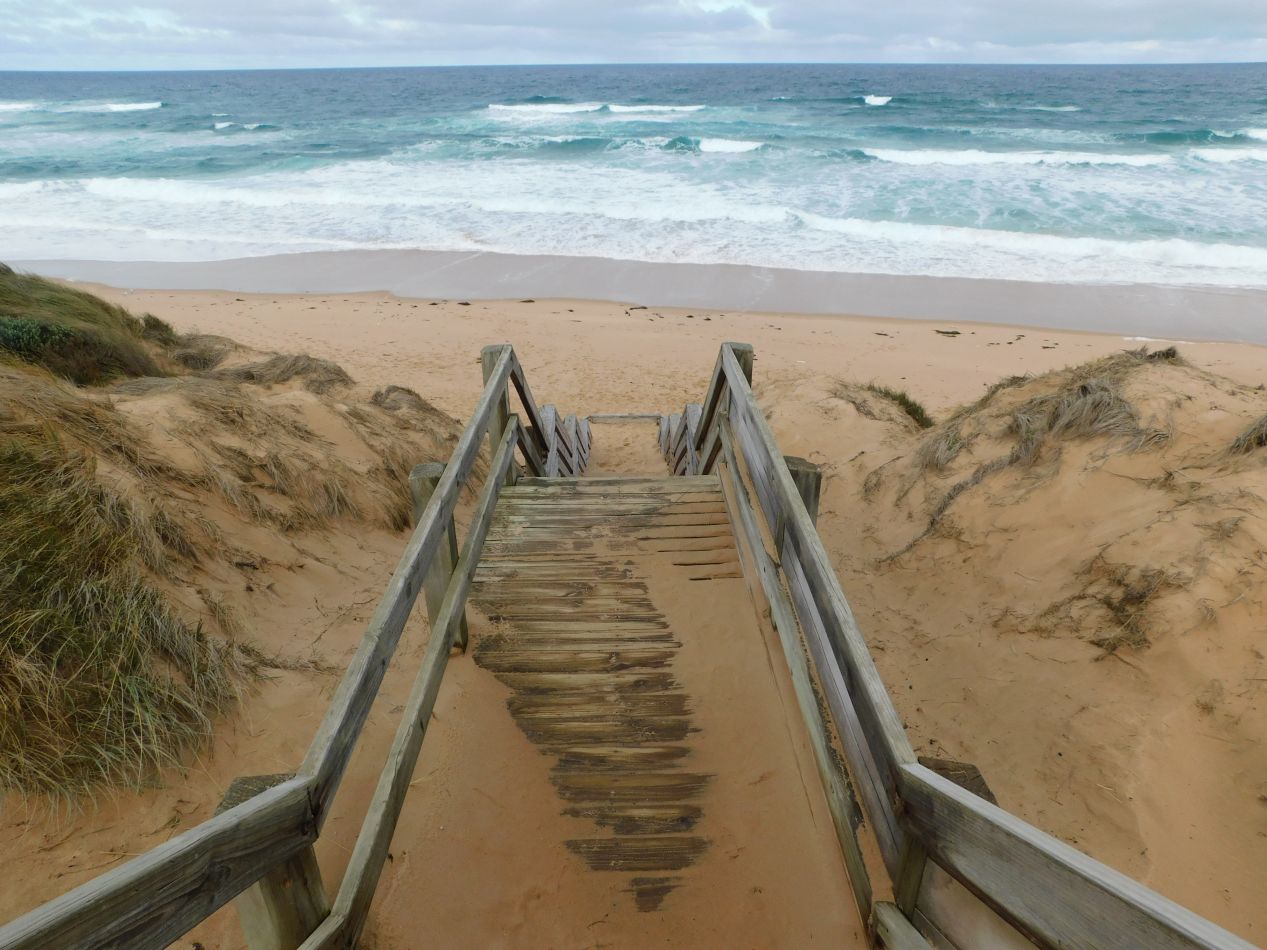

Our first stop after driving across the bridge to Phillip Island was the nature park located at Cape Woolamai. There was a tiny little town here with a population of about 1000 people (where we purchased batteries for our camera since they were about to run out) that largely seemed to contain beach houses used only in the summer months. Cape Woolamai is supposed to have very good surfing conditions and we saw a number of signs mentioning what surfers should and shouldn't do for safety reasons. Here in the winter months the shorefront was deserted at Anzacs Beach though, with just a single fisherman casting his lines into the water. It was cold and windy but fortunately not raining, making for a wild and picturesque seascape environment.

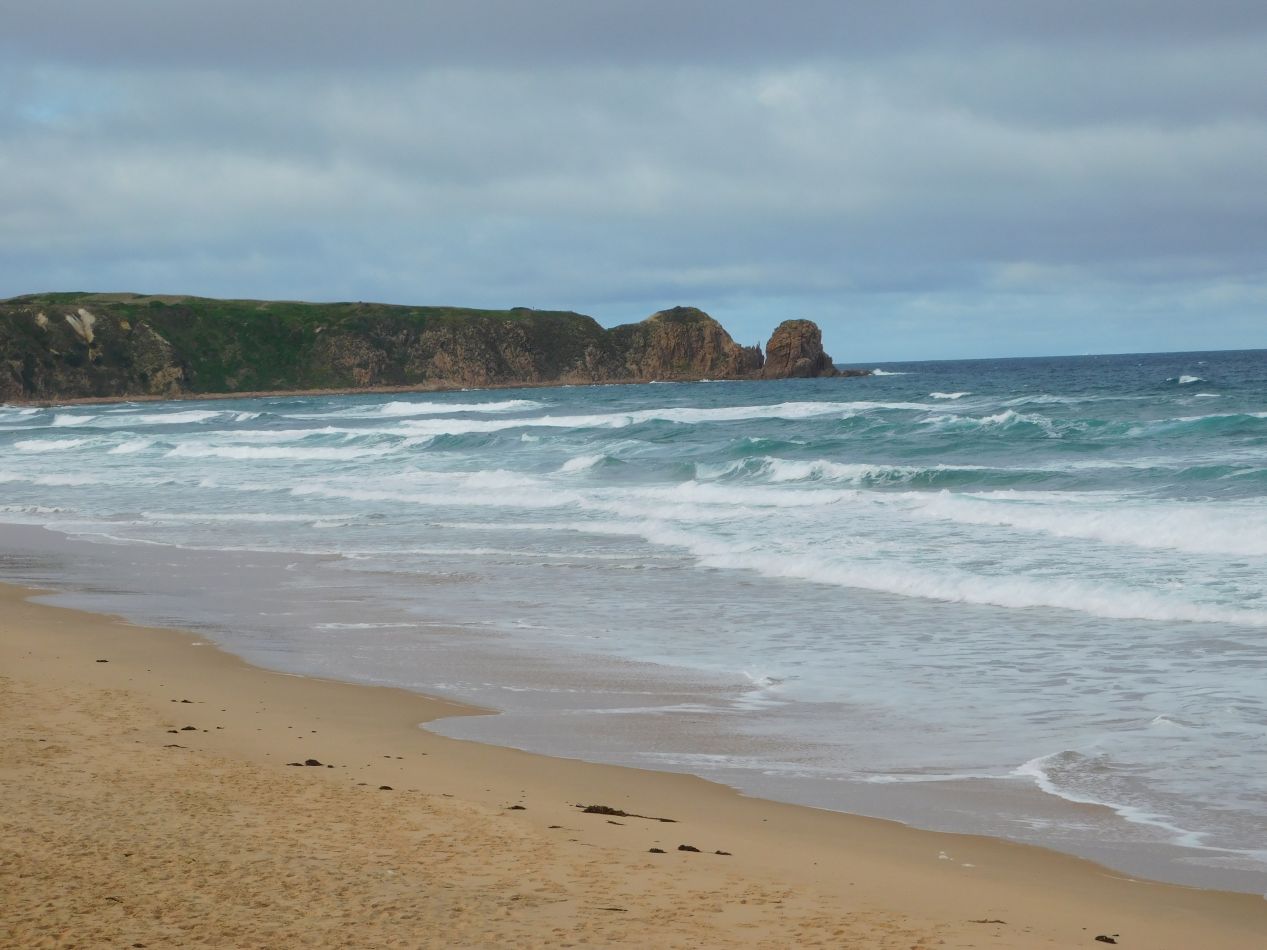


We drove a short distance up the winding road from Anzacs Beach until reaching the main parking lot at Woolamai Surf Beach. This was as far as our car could take us, and we decided to spend an hour or two hiking along some of the walking trails that ran atop Cape Woolamai. We thought that we'd try to reach the rock formation known as the Pinnacles, an easy walk of about 1.5 miles / 2.5 kilometers distance. There was supposed to be a lighthouse called the Beacon further out on Cape Woolamai, but we were hoping to visit some other attractions on Phillip Island and didn't have all day to spend hiking. The initial part of the trail took us for a walk along the deserted beach, where we could see waves of a breathtaking blue color roll in from the ocean. The Pinnacles were clearly visible in the distance and gave us a destination to walk towards. The whole place was empty aside from the two of us and the cries of the seabirds flying overhead.
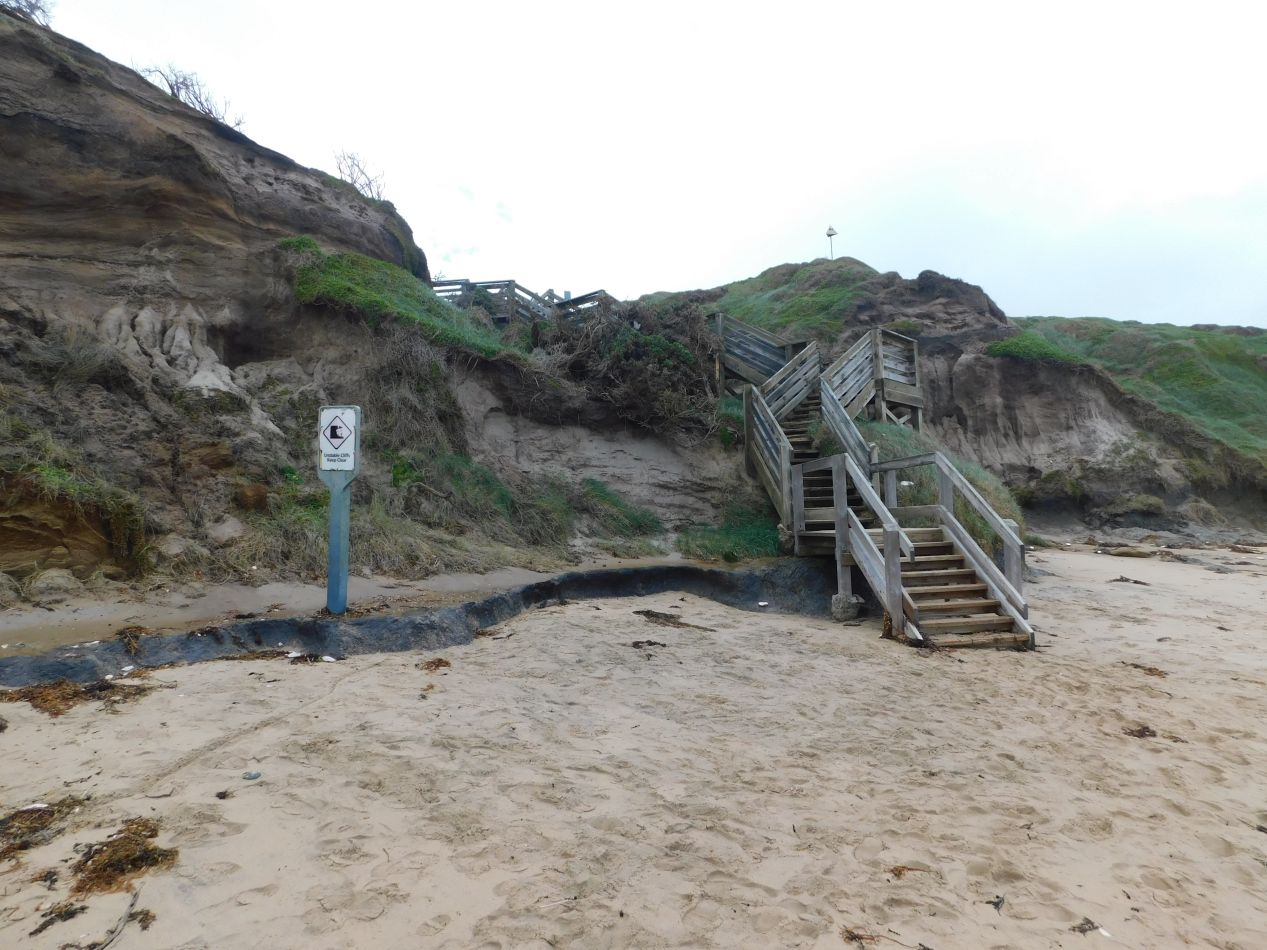

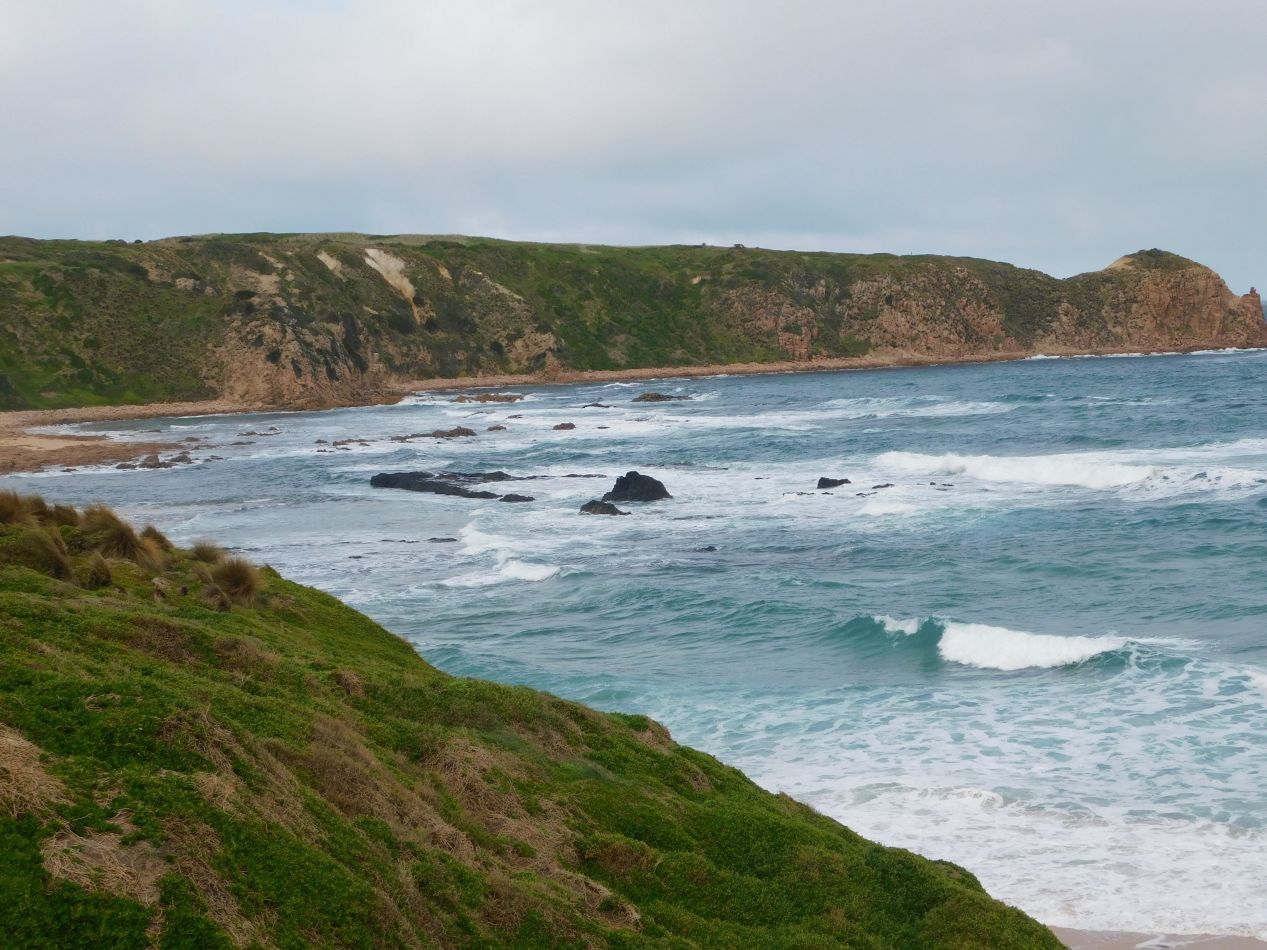
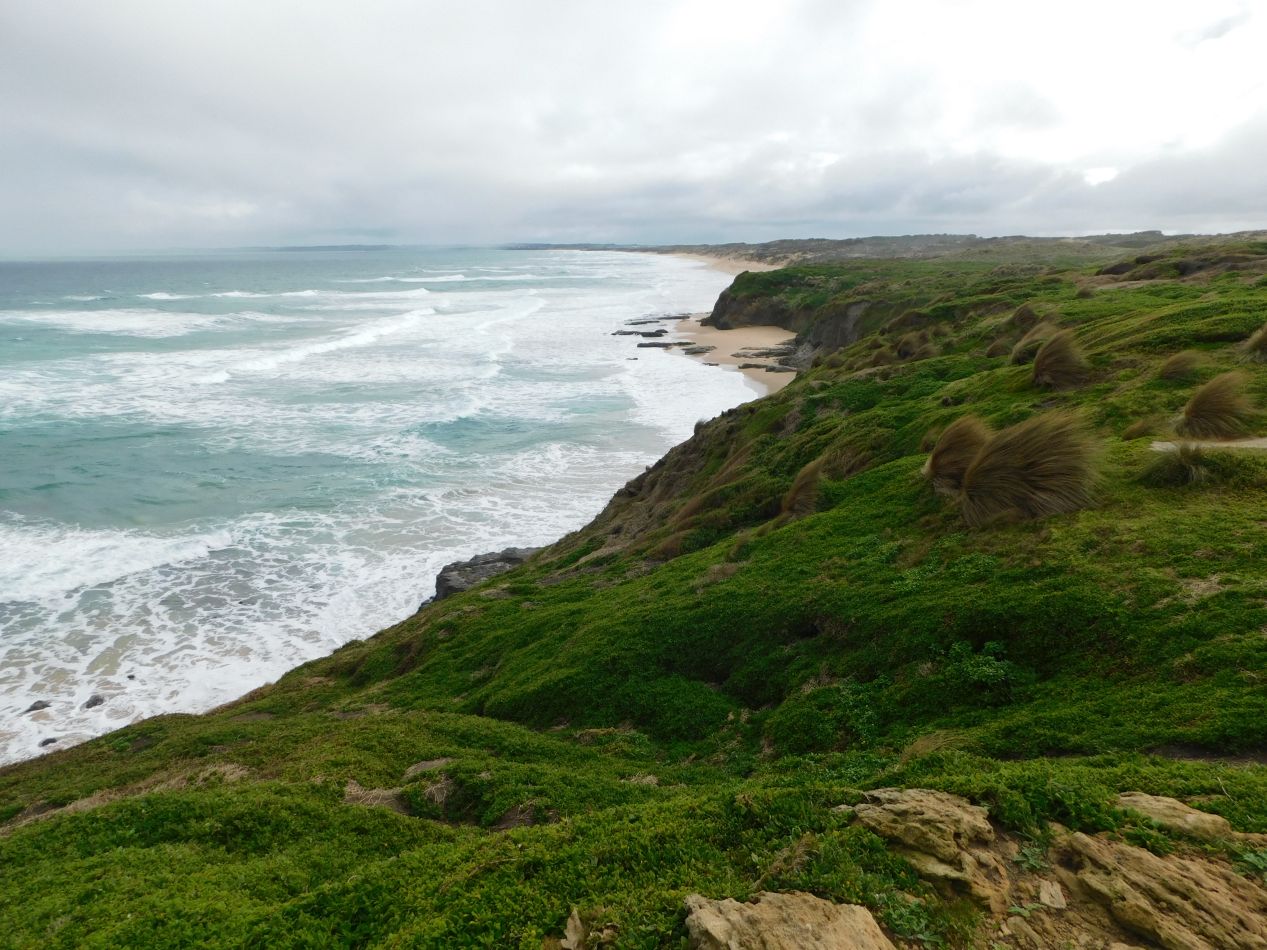
After 10-15 minutes of walking along the beach, the trail headed up a series of wooden steps onto the tops of the cliffs that ran along the coast. (These were officially labeled the "Magiclands steps" on the trail map that we'd seen back at the entrance, and I really wonder went into the decision to pick that particular name.) The trail was much more clearly defined at the top of the cliffs, a narrow dirt strip that ran between a series of grasses and short bushes of a type that I didn't recognize. The weather conditions must have been too rough and the soil too weak to support trees this close to the water's edge. It made for some gorgeous scenery though, especially when the green was contrasted against the blue of the waves smashing onto the rocks below. My understanding is that much of Australia's southern coastline looks like this, hundreds of miles of rugged and sparsely populated beaches that often feature dramatic cliffs. We didn't have time to visit the famous Twelve Apostles rock formation off to the west of Melbourne, but from the pictures I've seen it looks relatively similar to the conditions here at Cape Woolamai.
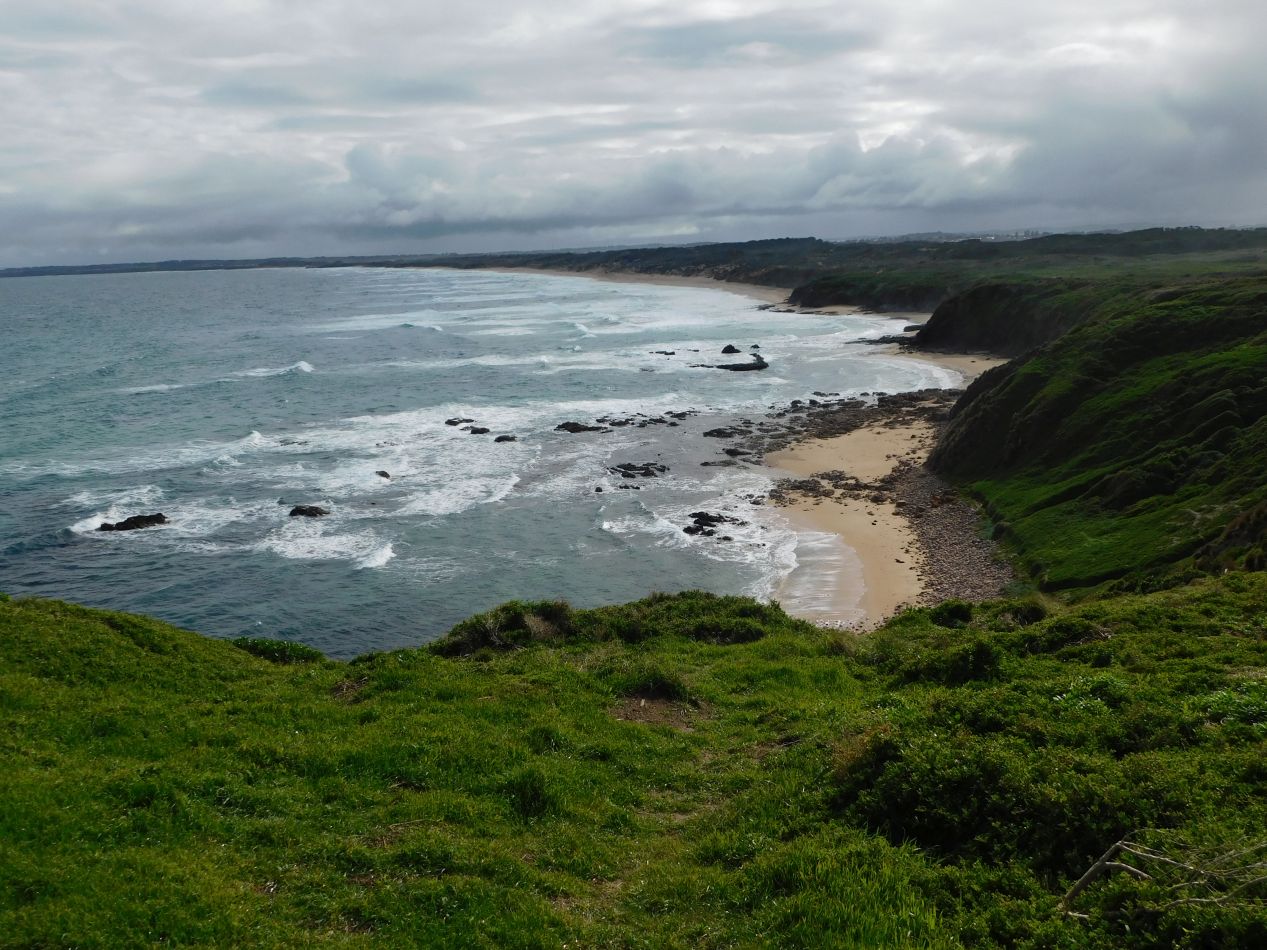
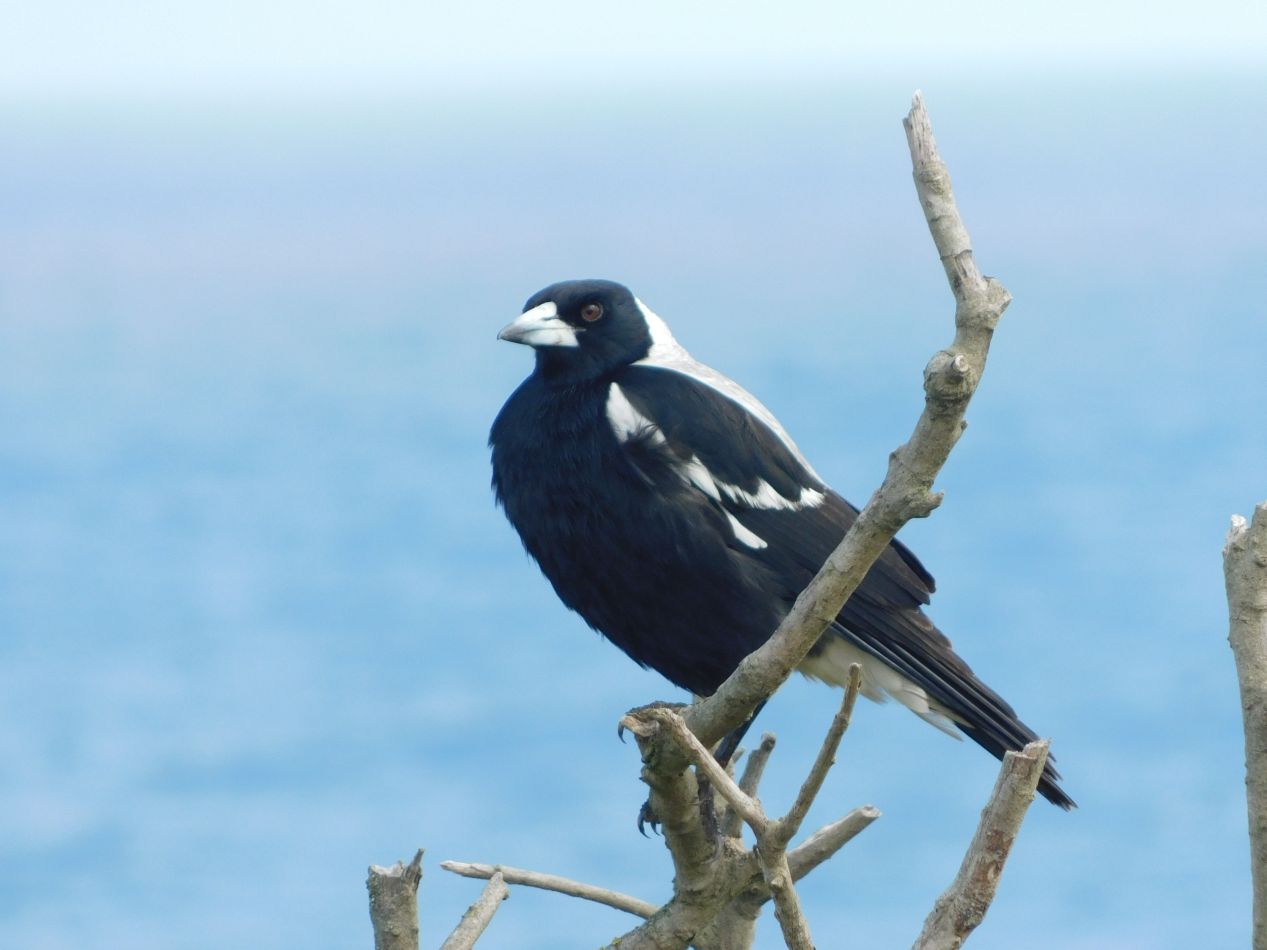
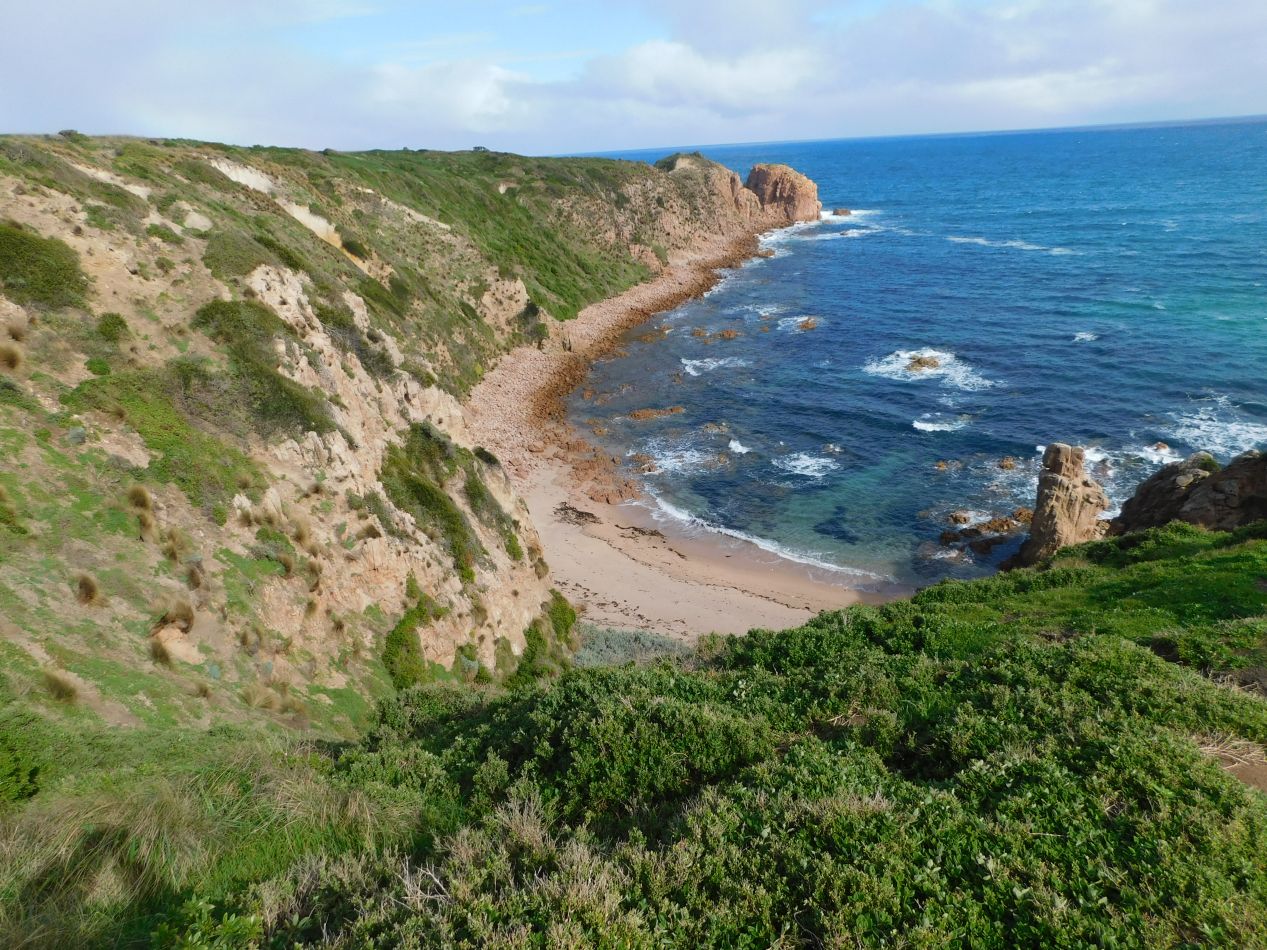
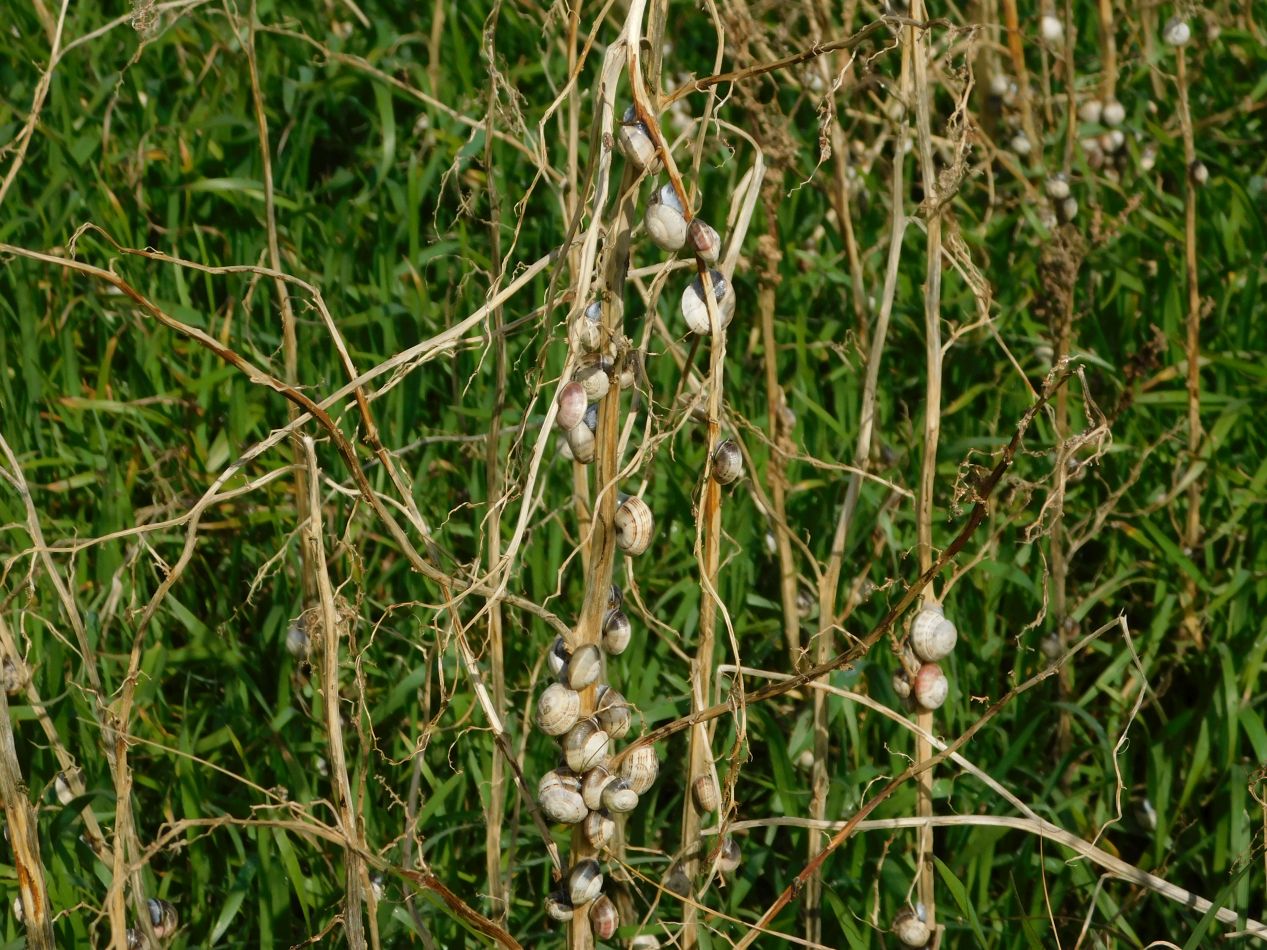
In addition to the amazing natural scenery, we were also getting a chance to spot some of the local wildlife in this area. The main animals on display were birds of several different types, seabirds that lived off insects or fish that made their homes along the coast. I have no idea which species the bird pictured above was, a striking fellow with black and white plumage. We also discovered that the walking path was packed full of thousands of tiny little snails, creatures that clung to the stalks of the grasses in the area and inevitably fell onto the path when disturbed by the wind. Although both of us did our best to avoid stepping on any of the snails, I'm sure that we inadvertently crushed some of them along the way. There were just so many of them that it was hard to dodge all of the little shells. Meanwhile, the sky threatened to rain repeatedly, and we could see rain falling out over the water in the distance, but through a quirk of good luck we managed to dodge any precipitation on this walk. The sun even came out briefly and gave us a different perspective on the same scenery that we'd been enjoying under overcast skies.
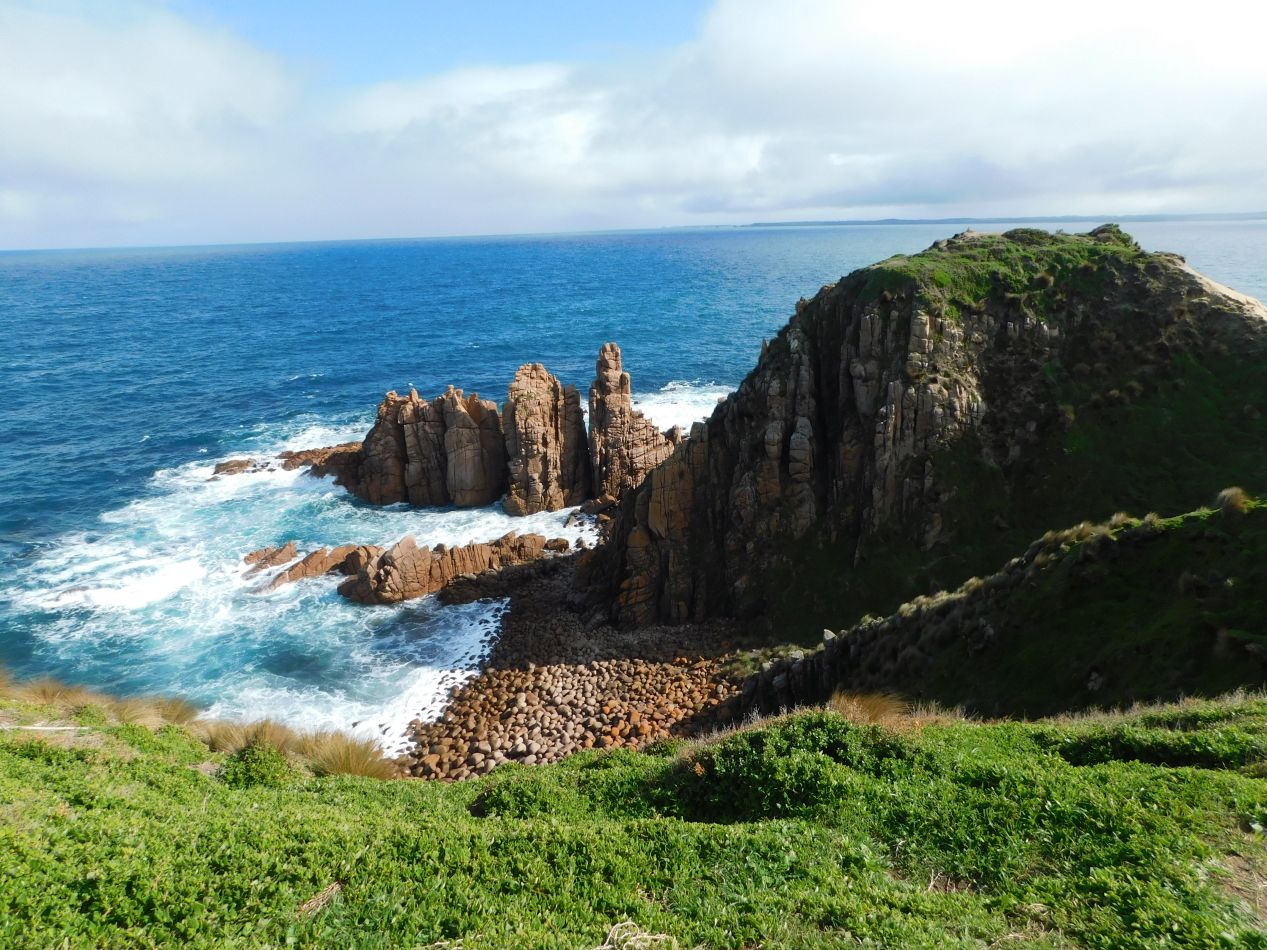

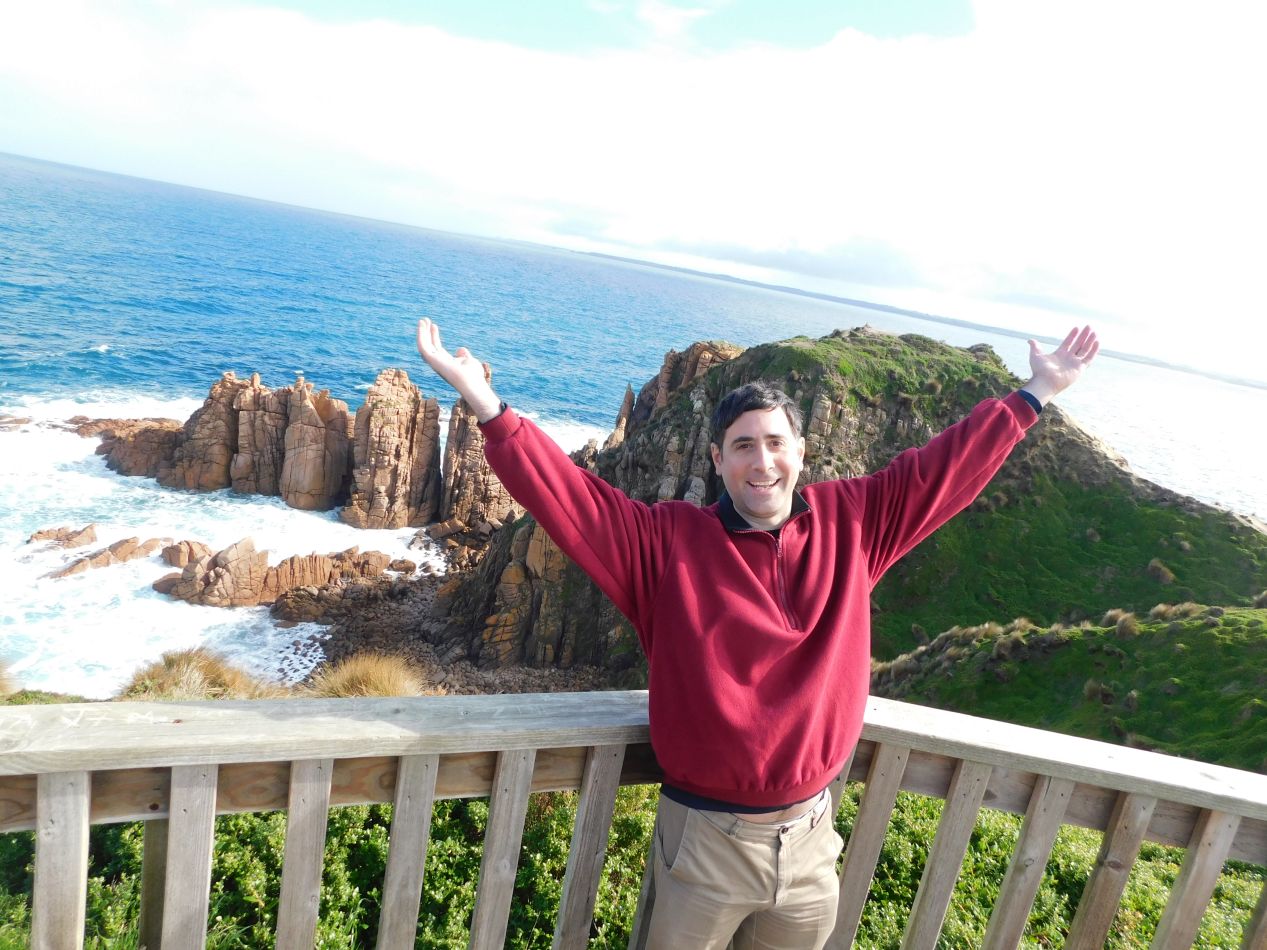
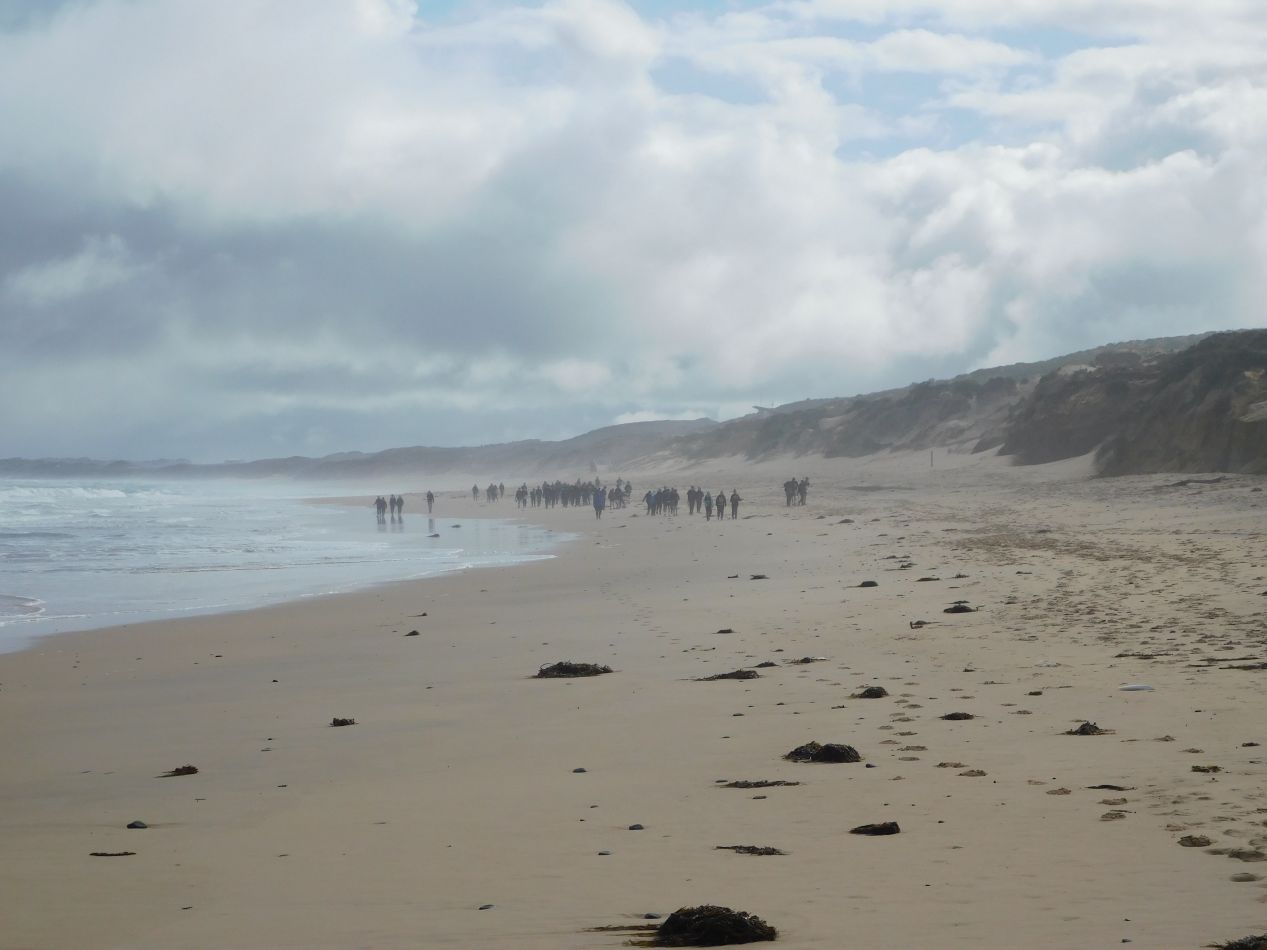
Eventually we reached our destination at the Pinnacles. The rock formations here had giant warning signs telling visitors not to go anywhere near the cliffs because they were unstable and presented a severe hazard of falling and drowning. Naturally there was a well-worn path extending beyond the fenced-off area indicating that lots of people ignored these warnings and head out onto the cliffs anyway, sigh.  The Pinnacles were certainly impressive in their own right, a place where the surf crashed up against the rocks in towering sprays of white foam. The water here was also one of the bluest shades of blue that I can remember seeing, if that makes any sense. This was even a rare place where Liz was able to get a good picture of me posed in front of an attraction of some kind. After stopping here for a few minutes to rest and enjoy the scenery, we started the leisurely walk back to the parking lot. We ran into a school group on a field trip while we were returning along the beach, by far the most people that we'd seen thus far. I wish that I'd been able to take a school trip to a place as interesting as this.
The Pinnacles were certainly impressive in their own right, a place where the surf crashed up against the rocks in towering sprays of white foam. The water here was also one of the bluest shades of blue that I can remember seeing, if that makes any sense. This was even a rare place where Liz was able to get a good picture of me posed in front of an attraction of some kind. After stopping here for a few minutes to rest and enjoy the scenery, we started the leisurely walk back to the parking lot. We ran into a school group on a field trip while we were returning along the beach, by far the most people that we'd seen thus far. I wish that I'd been able to take a school trip to a place as interesting as this.
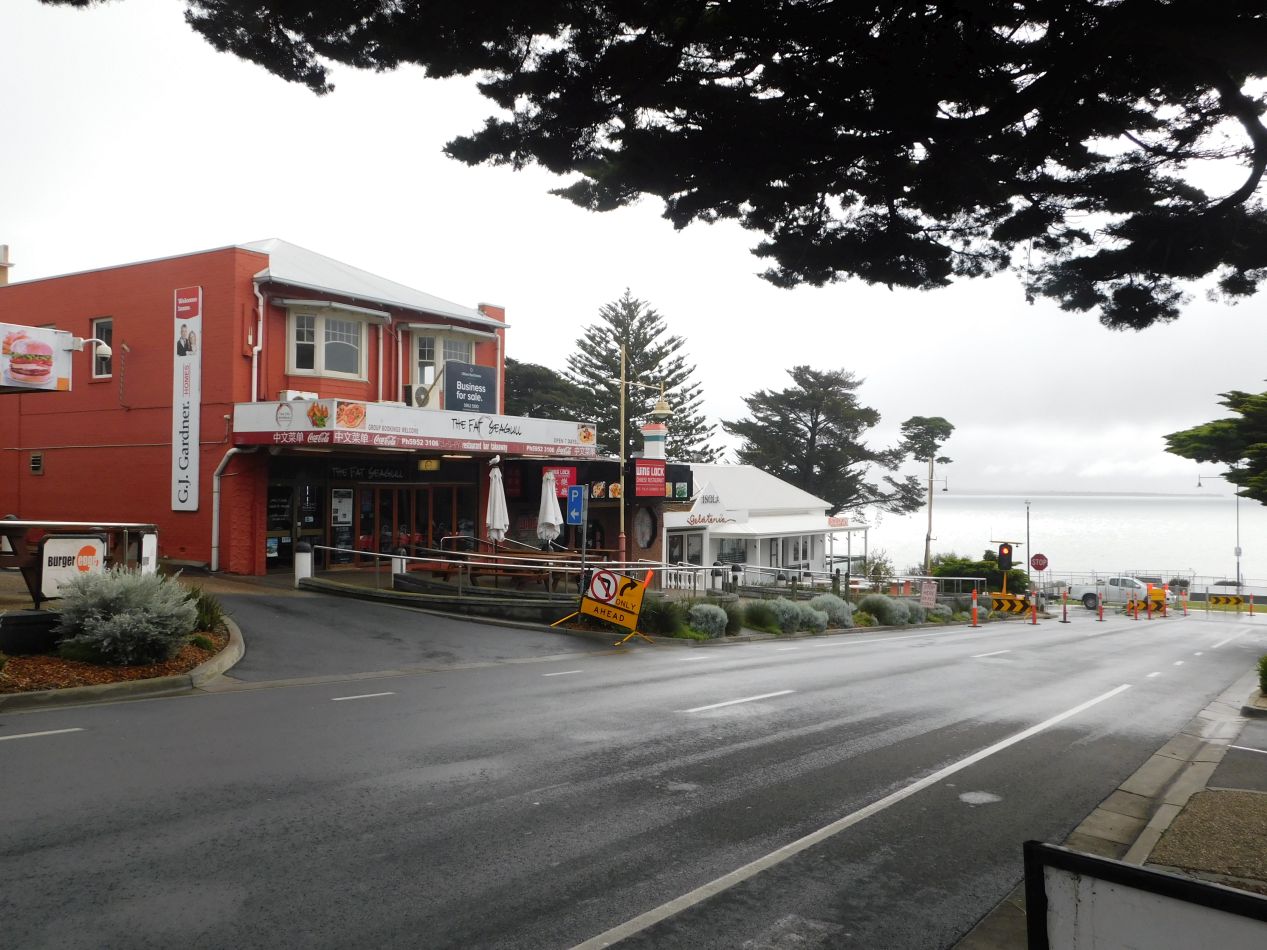
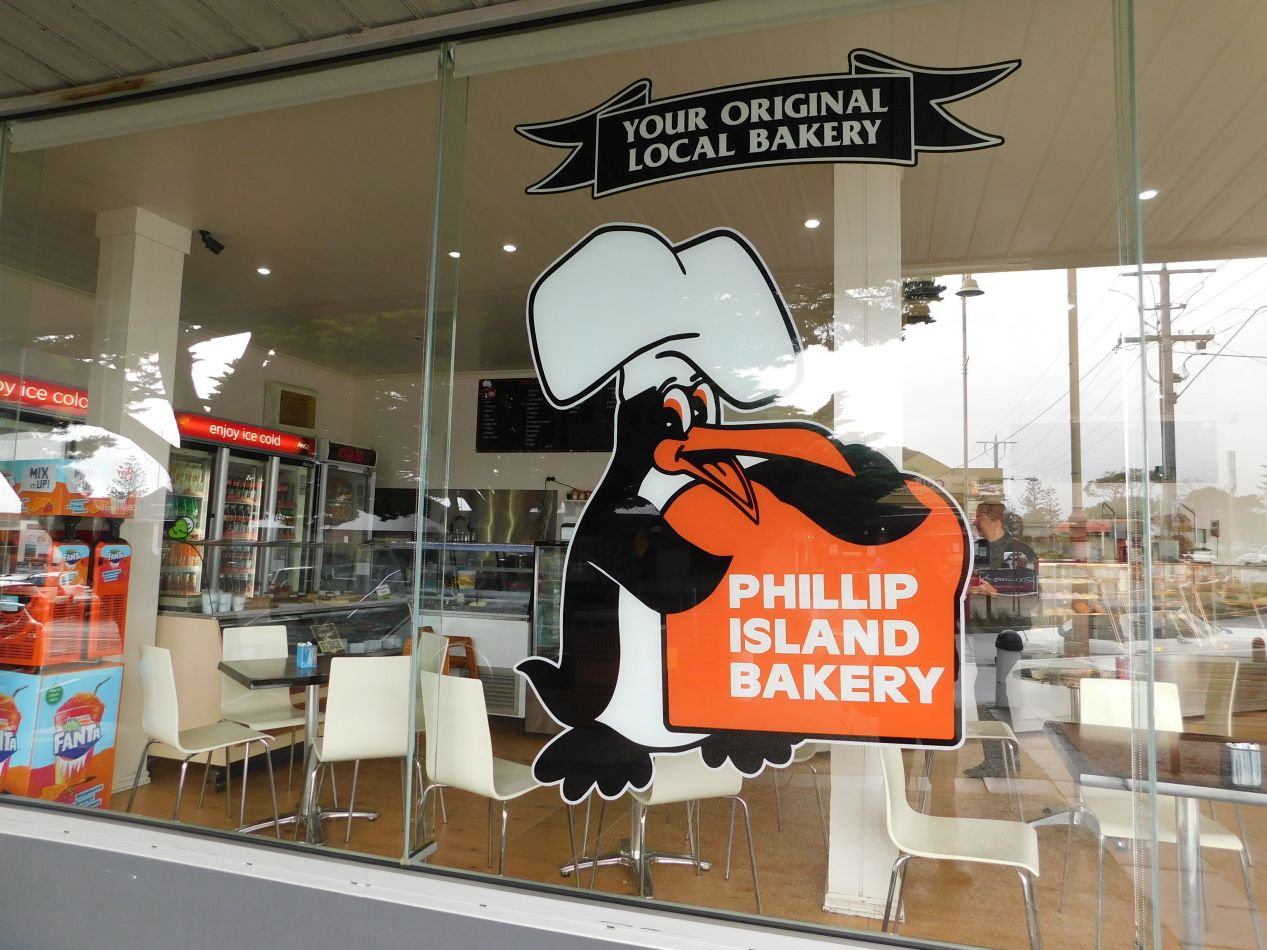
We had lunch in the town of Cowes, the largest settlement on Phillip Island with a population of about 4500 people. Like the small town at Cape Woolamai, Cowes was clearly a beach resort where the population swelled dramatically during the summer months. Although many of the stores were closed up for the winter, we were still able to get a tasy meal at a Japanese-themed restaurant named Youki's. We walked down the main street of Cowes but there wasn't a ton to see here at this time of year. I mostly loved the logo used by the Phillip Island Bakery: a cartoon penguin with a chef's hat holding a slice of bread. We were looking forward to seeing the penguins later on this evening.
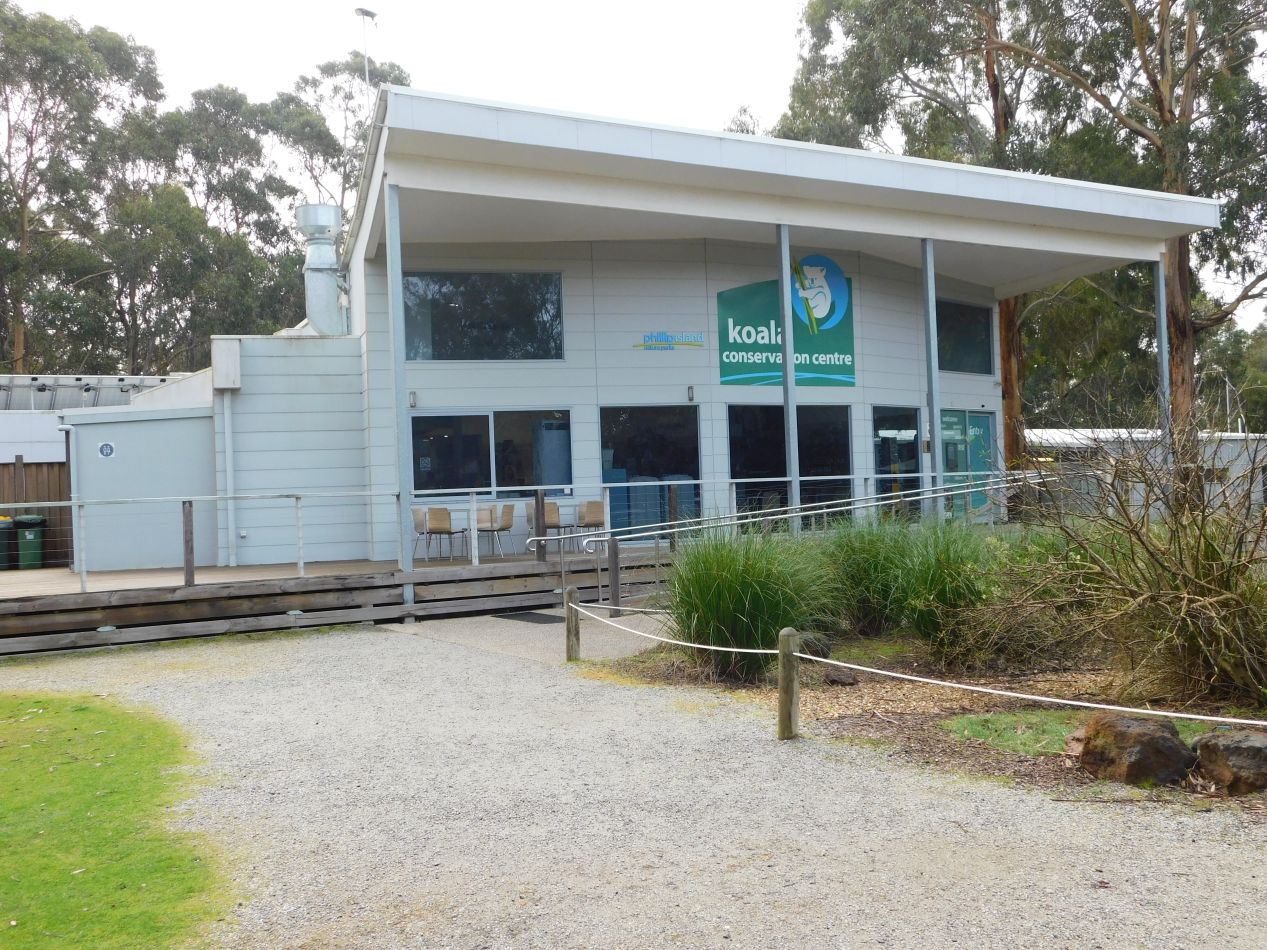


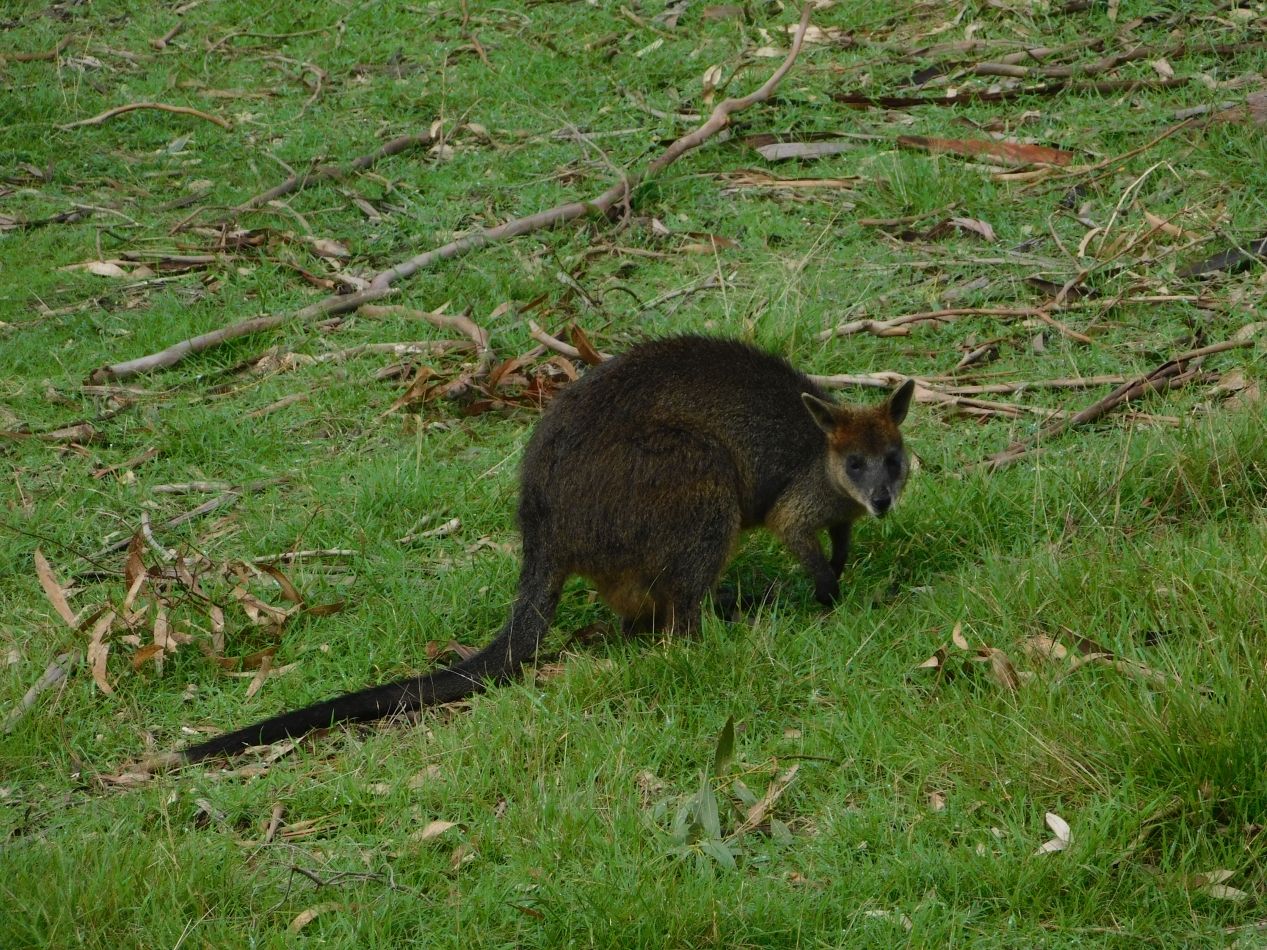
Before visiting penguins though, it was time for us to see more koalas. Phillip Island has an attraction known as the Koala Conservation Centre where local staff takes care of about two dozen of the cuddly animals. They are native to this region and can be found throughout most of Australia; I recall seeing a series of koala crossing road signs during our drive from Canberra down to Melbourne, a sign that the koalas were relatively common. There was a small educational museum attached to the conservation center that provided some background information on the animals, including the sad story of how much of the wild koala population has been infected with Chlamydia. Koalas are not an endangered species but they do face threats from the aforementioned diseases, loss of habitat, collisions with cars, and attacks from dogs (which are not native to Australia). By the way, the conservation center must have been doing an even better job than they suspected, as we immediately spotted a wallaby hopping around its grounds. We'd seen wallabies before in zoos at Brisbane and Sydney but this was a rare chance to see one in its natural habitat.
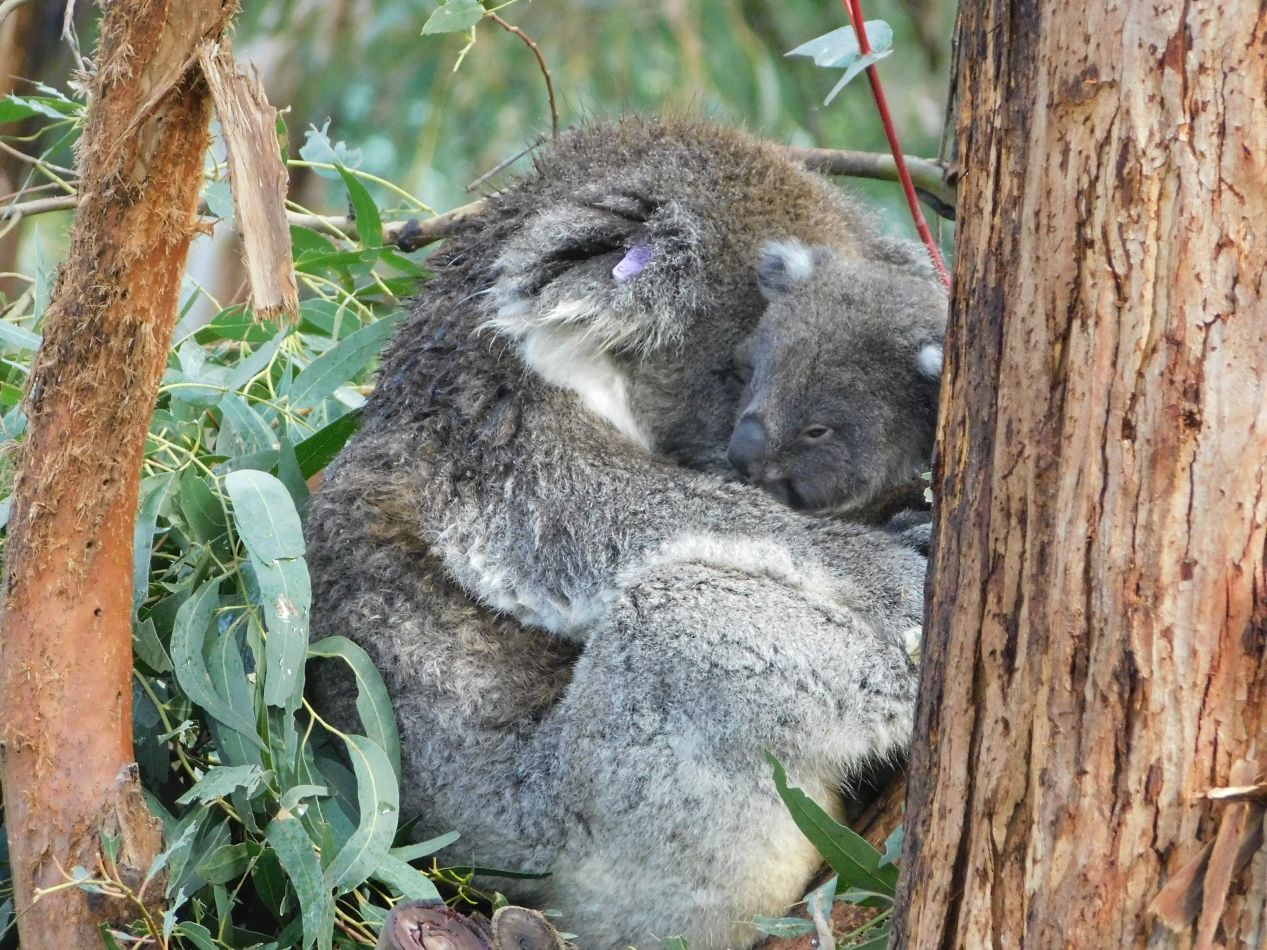
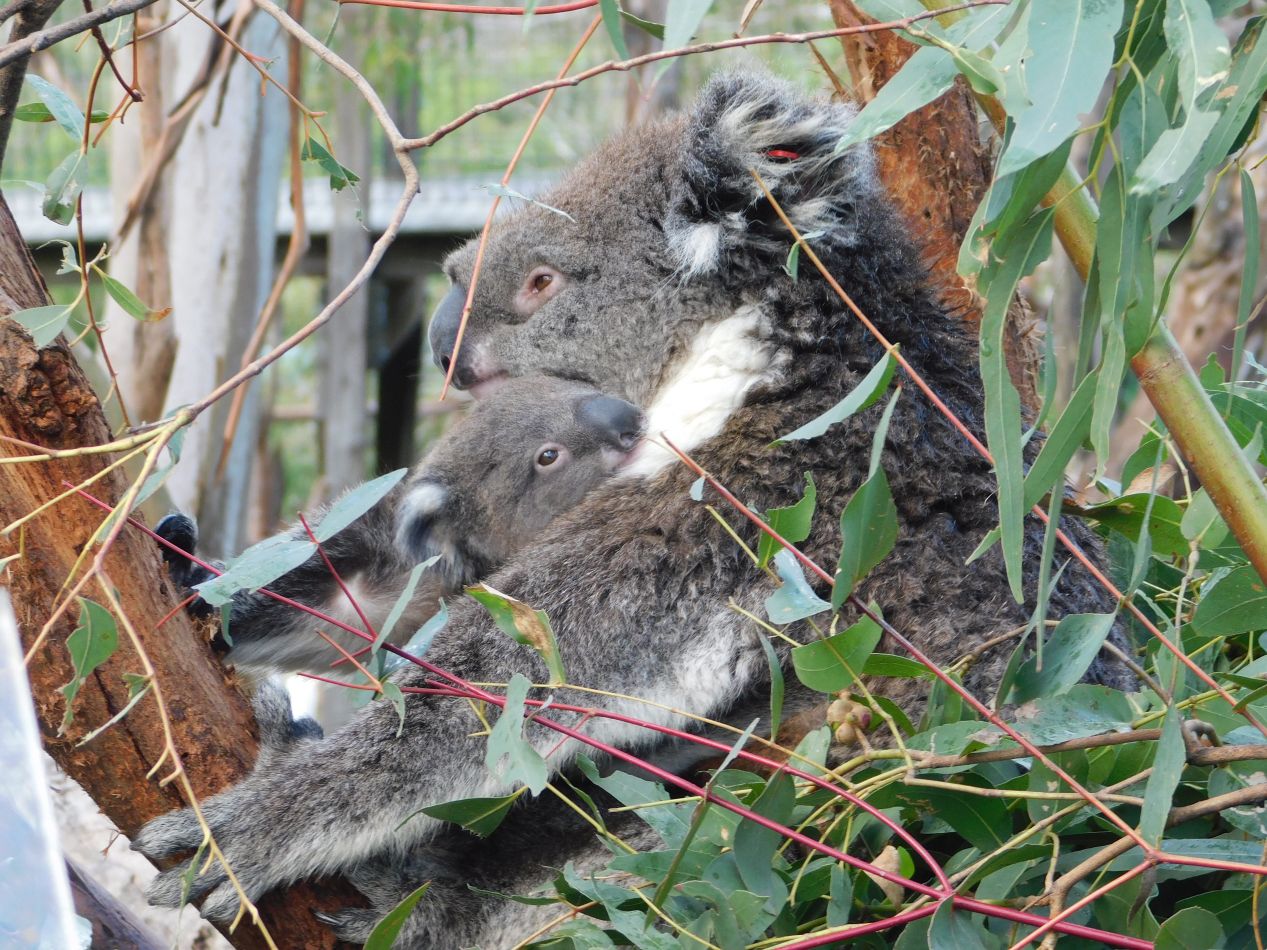


We turned out to have fantastic luck when it came to viewing koalas at this Phillip Island sanctuary. There were a series of wooden walkways running through the area where the koalas lived, and one of them passed right next to the spot where a mother koala was eating a meal with her joey. The little guy was unbelievably cute to watch, as it spent half the time clinging tightly to its mother and the other half of the time crawling out onto the tree branches to chomp on some eucalyptus leaves. This was the first time that we'd been able to catch koalas on this trip while they were eating a meal, as opposed to the 80% of the time that they spend sleeping. It was wonderful and fortuitous timing on our part, easily making the stop worthwhile. We ended up seeing about a dozen more koalas in the rest of the Conservation Centre, but they were mostly up in the trees doing their normal sleeping thing. We weren't going to be lucky enough to catch another baby koala at feeding time.

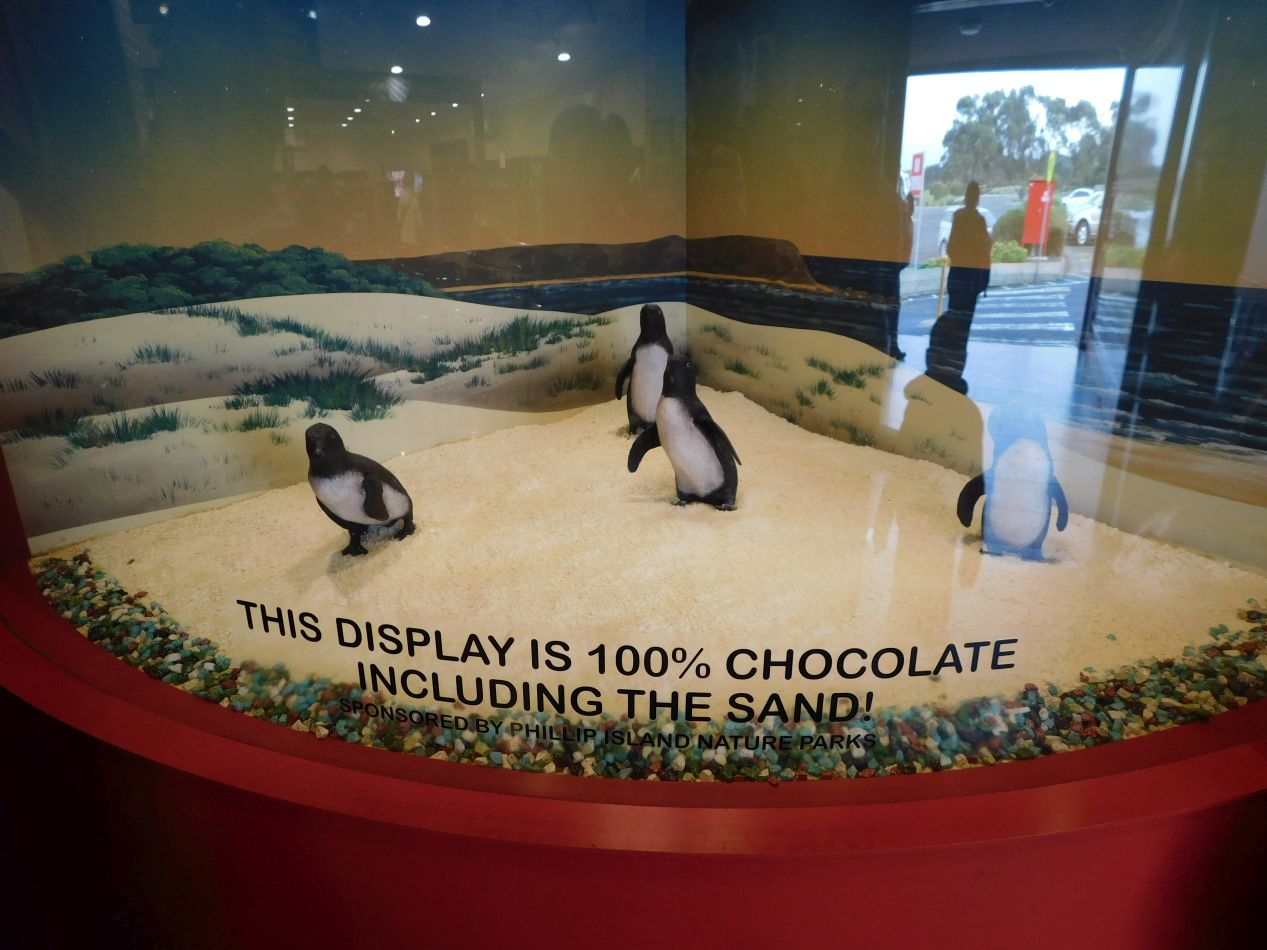
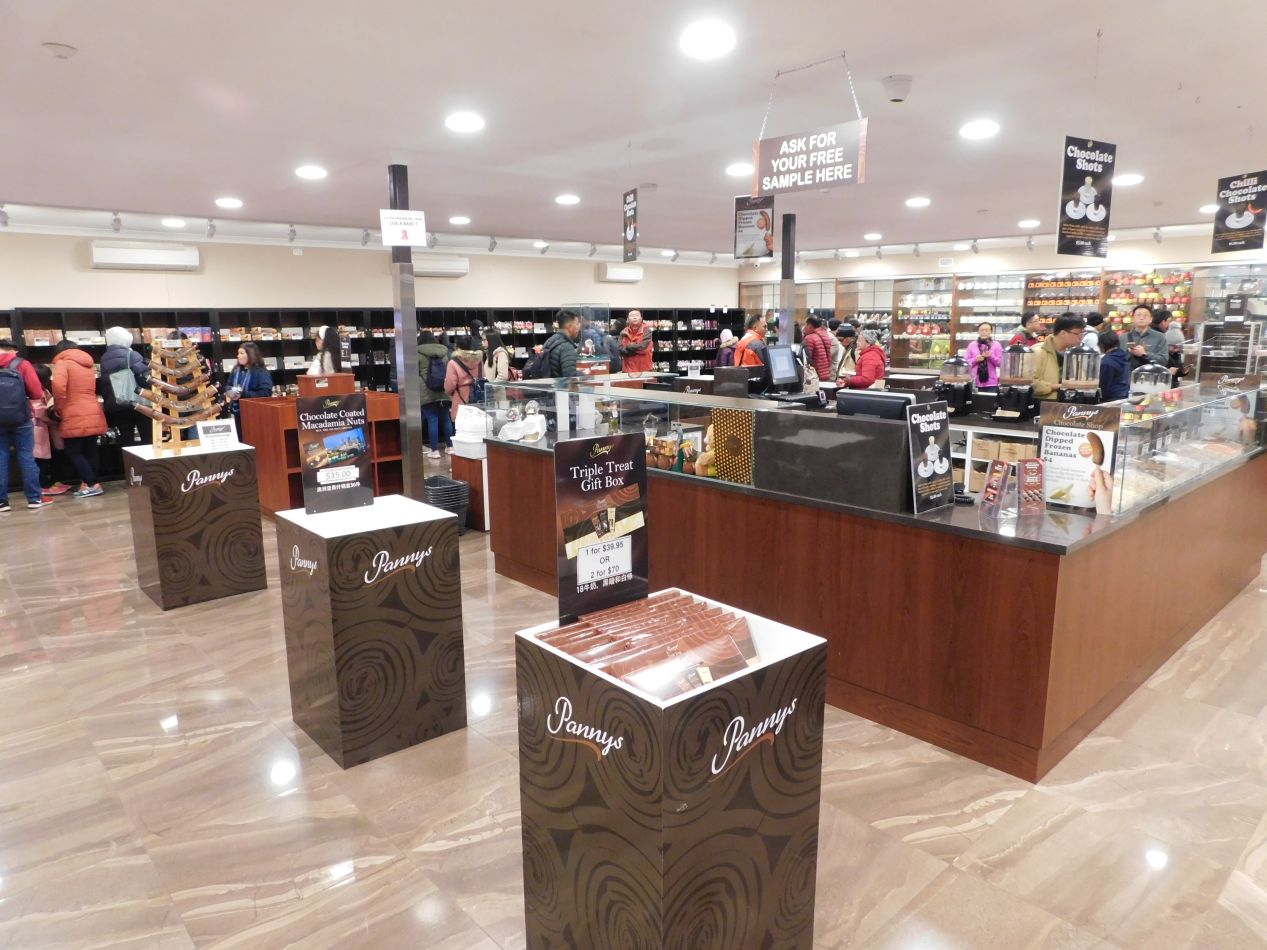

Considerably less interesting was the tourist trap attraction known as the Amazing World of Chocolate. We had passed by this store earlier and were close enough that we decided to pop in for a look, only to find that it was the worst sort of touristy schlock. I mean it was great if you were looking for chocolate shaped into all sorts of different setups, like flowers and animals and shoes (?) but there was certainly no connection to Phillip Island's natural scenery or wildlife to be found here. The Amazing World of Chocolate seemed to be very popular with tourists though, as we saw several buses arriving and leaving during the short span of time that we were here. Furthermore, the tourists on those buses seemed to love the chocolate on sale, which was practically flying off the shelves despite being rather overpriced. Perhaps the tourists were in the mood to treat themselves while on vacation, who knows.


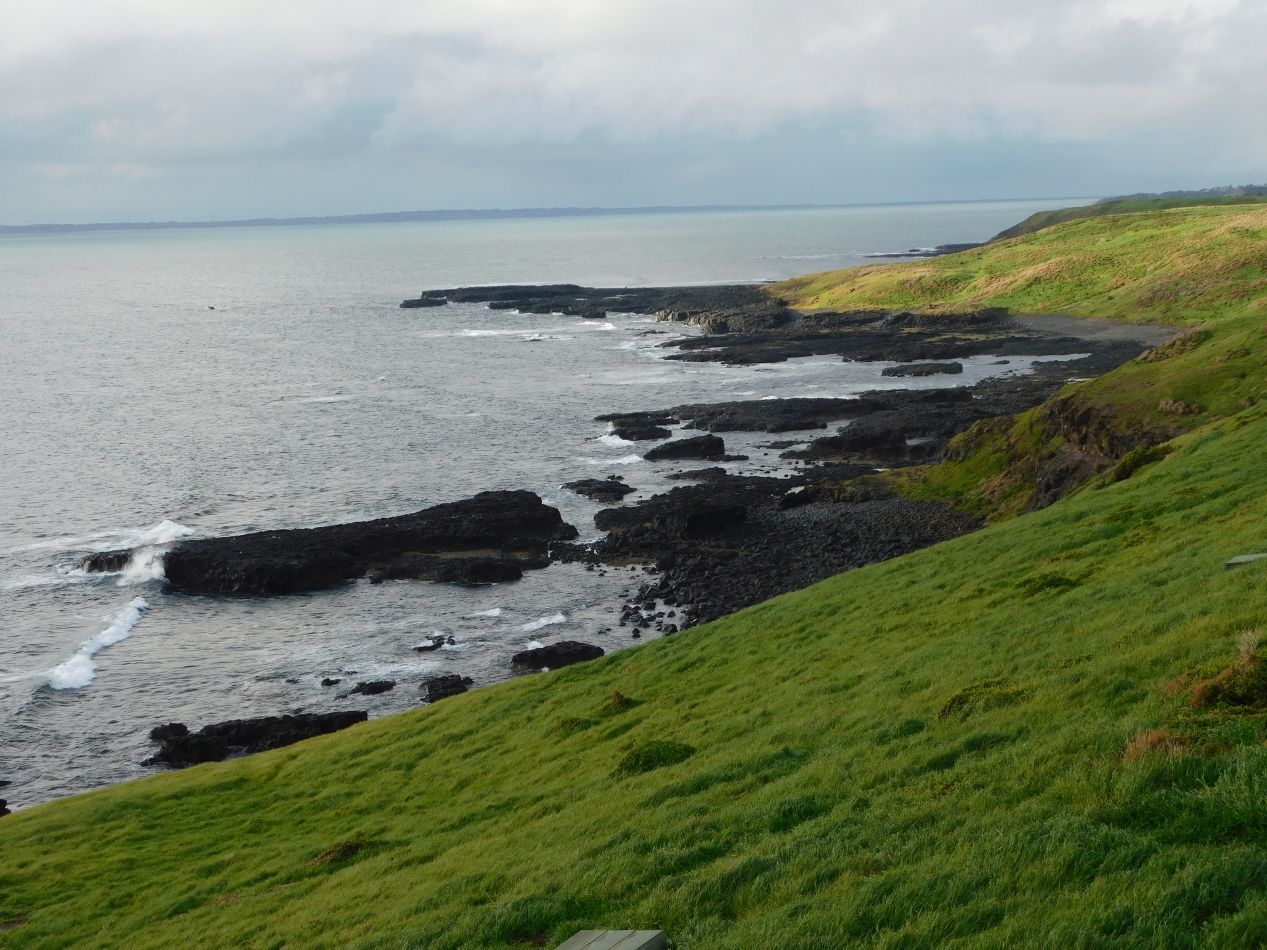

The sun was starting to set now and we headed over to the southwestern tip of Phillip Island in preparation to see the penguins. We stopped first at the ecotouism center known as the Nobbies, named after a rock formation at the edge of the island. We largely skipped the indoor portion of this attraction, where the Nobbies Ocean Discovery Centre contained a series of exhibits about marine life, with a focus on the penguins and seals that live in the nearby waters. Instead we headed outside onto the boardwalks where we could see some of the marine wildlife along the coastline. Our timing was perfect here as the late afternoon sunlight provided a picturesque backdrop to these images of the rugged coast. Right away we spotted some kind of goose strutting through the low brush, rooting for prey amongst the greenery. There was a colony of seals that lived in the area as well, but we'd arrived at the wrong time of the year and didn't see any of them among the rocks.

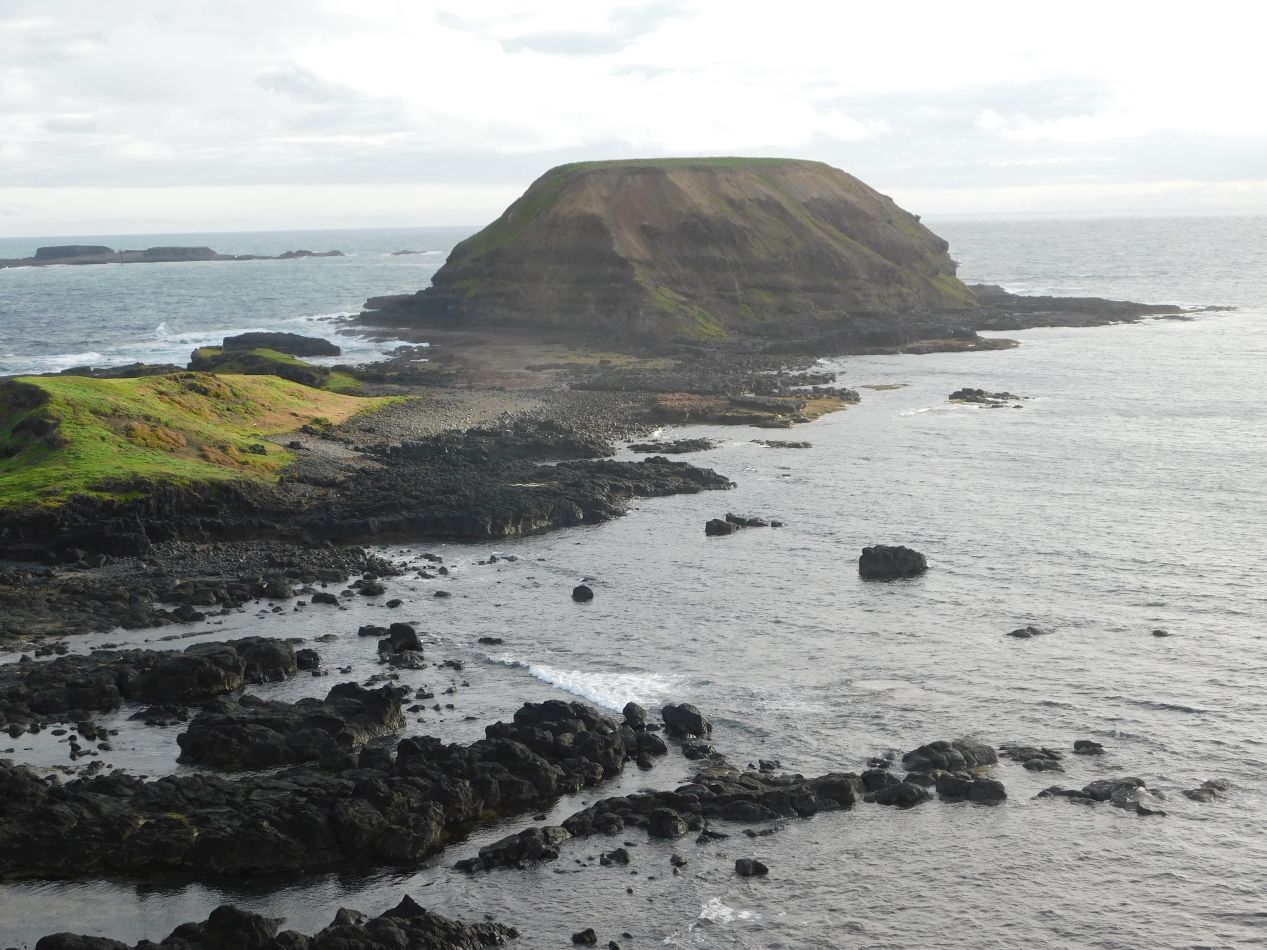
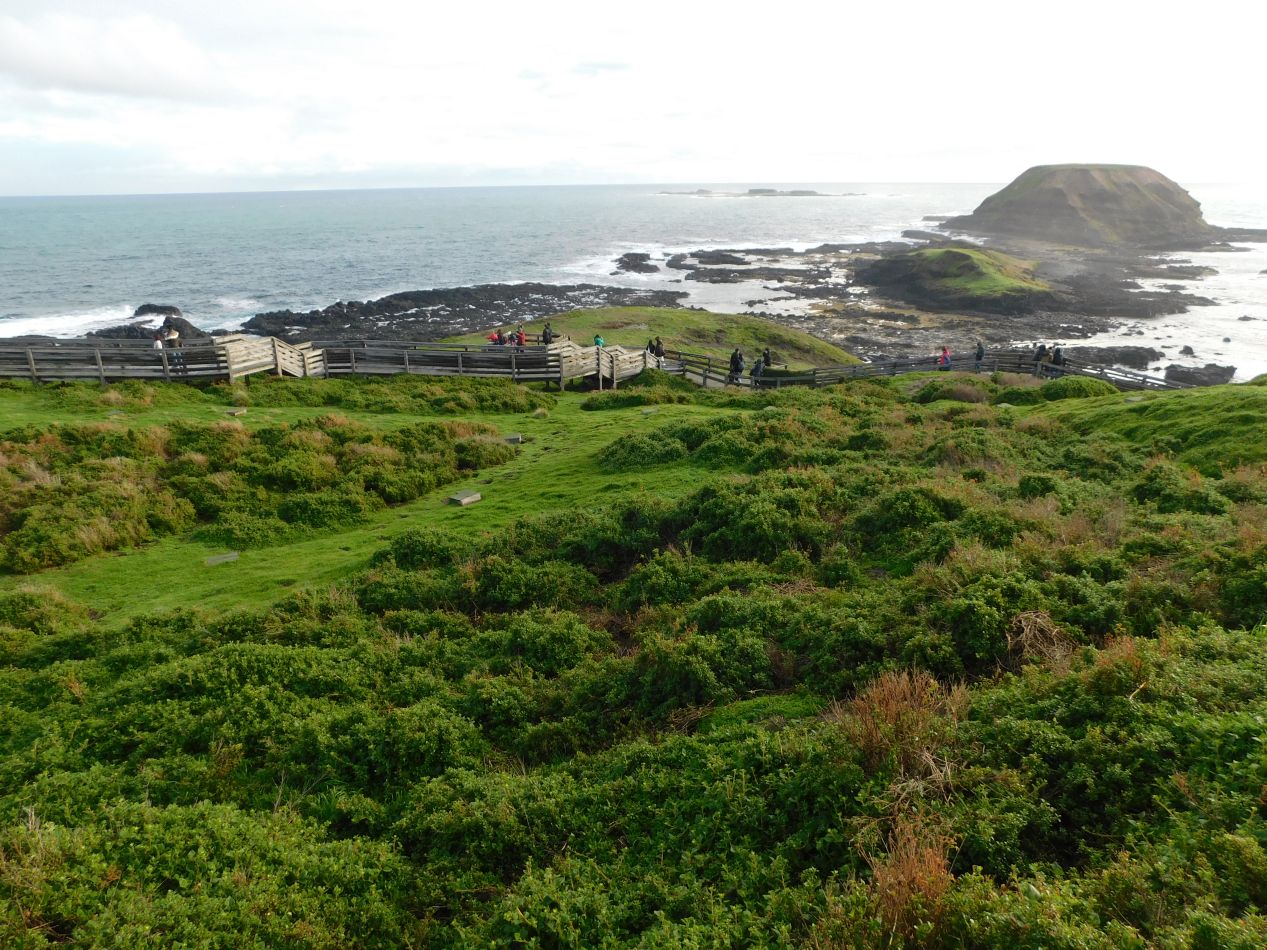

It was a short looping walk along the wooden boardwalks as they hugged tightly to the landscape. The views here were similar to what we'd seen at Cape Woolamai earlier in the day, with the difference being that there were hundreds of other people here at the Nobbies sharing the scenery with us. This place was tour bus central and there were lots of groups speaking English or Chinese depending on where they were coming from. We also noticed that there were low wooden huts scattered along the sloping hills here, and it turned out that these were nesting shelters built for the penguins that live on Phillip Island:


It might be a little bit difficult to see because of the poor lighting, but there was a penguin nesting inside the pictured hut. This is the main reason why tourists come to visit Phillip Island, as the Penguin Parade where we were heading next is the only commercial venue in the world where you can see penguins in their own environment. The whole southern coast of Phillip Island was originally scheduled to be opened up for commercial development, until a determined fight by local conservationists managed to preserve the area (and ironically turn the whole island into a major tourist destination by saving the penguin nesting grounds). As much as we'd been enjoying the scenery along the coast, I doubt that we would have come to Phillip Island without the adorable little birds to see.
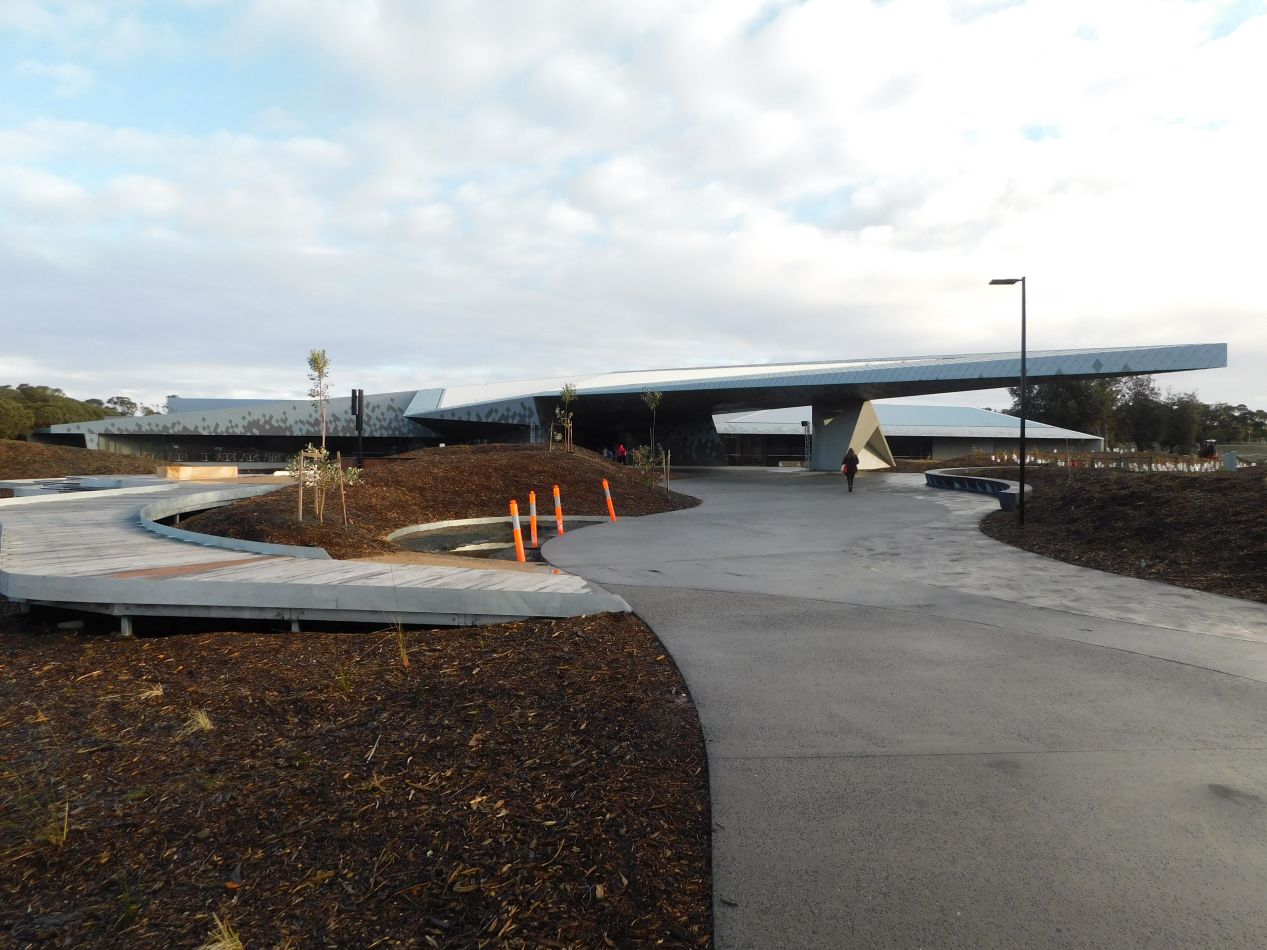

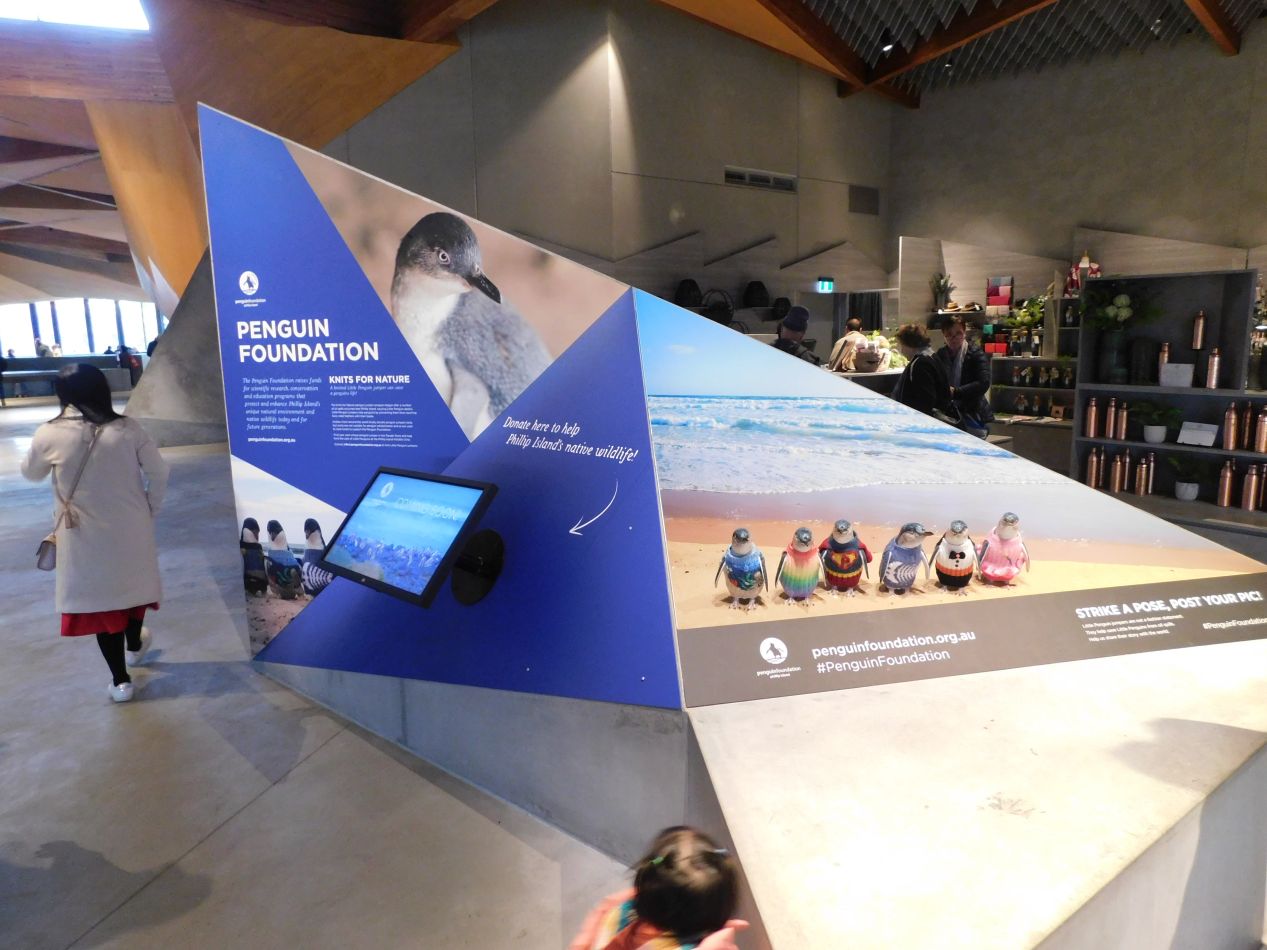

These are pictures taken from the main building at the Penguin Parade, about a mile away from the Nobbies on the Summerlands peninsula. We noted as we were parking our car that the Penguin Parade building looked like it was brand new, with some of the construction not entirely finished yet, and that turned out to be correct. We learned from a tour guide that the place had literally opened ten days earlier and the staff was still in the process of adjusting to the new building. This shiny new structure was a beautiful venue to host the tourists who came to see the penguins, with its own informational nature displays, restaurant and cafe, plus substantial gift store. There were about a thousand different types of penguin memorabilia for sale here, with my favorite being little stuffed penguins wearing the colors of each of the Aussie football teams. (We could pick out Carlton and Richmond from the match we'd seen two days earlier.) The Penguin Parade keeps growing in popularity with more and more tourists arriving every year, and the previous building that they had been using just wasn't large enough to handle the crowds any longer.

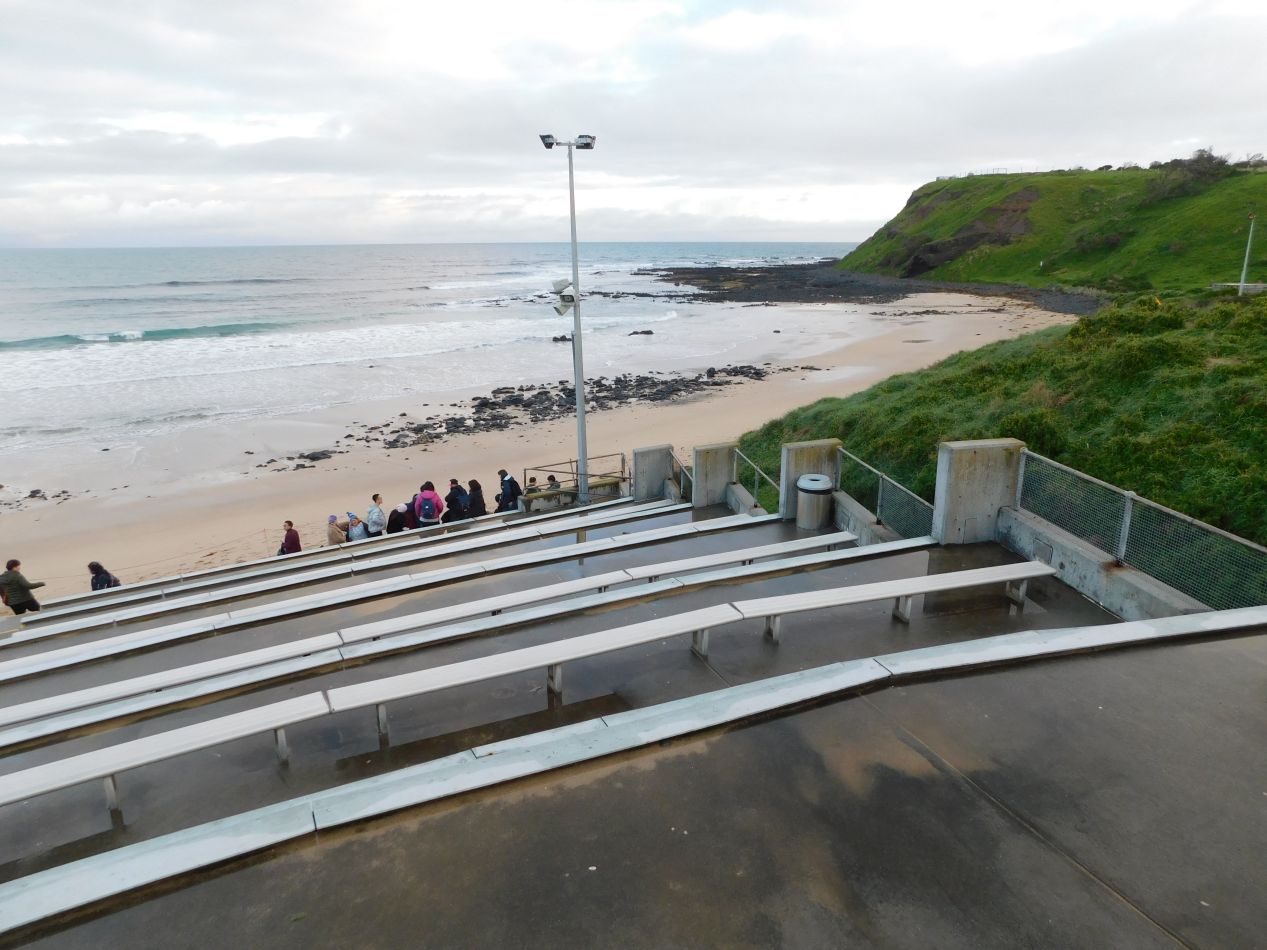


We had signed up to take part in a guided ranger tour which wasn't set to begin for another half hour. I should mention that the penguins spend their daylight hours out at sea and only return after the sun sets, and as a result all of the action at the Penguin Parade takes place after darkness falls. I used some of the intervening time before our tour started to walk down the boardwalks to the beach at Summerlands Bay where the crowd would be gathering in an hour to watch the penguins. There were bleachers set up here for the tourists and some of the early-arriving visitors were already claiming their seats down closer to the water. This was not the area where we would end up watching the birds come ashore; we were in a smaller spot off to the right of these bleachers where we had a better vantage point. That view looking back towards the shore depicts the old Penguin Parade building, which had just closed up shop less than two weeks before and was planned to be demolished in order to provide more habitat space for the penguins.
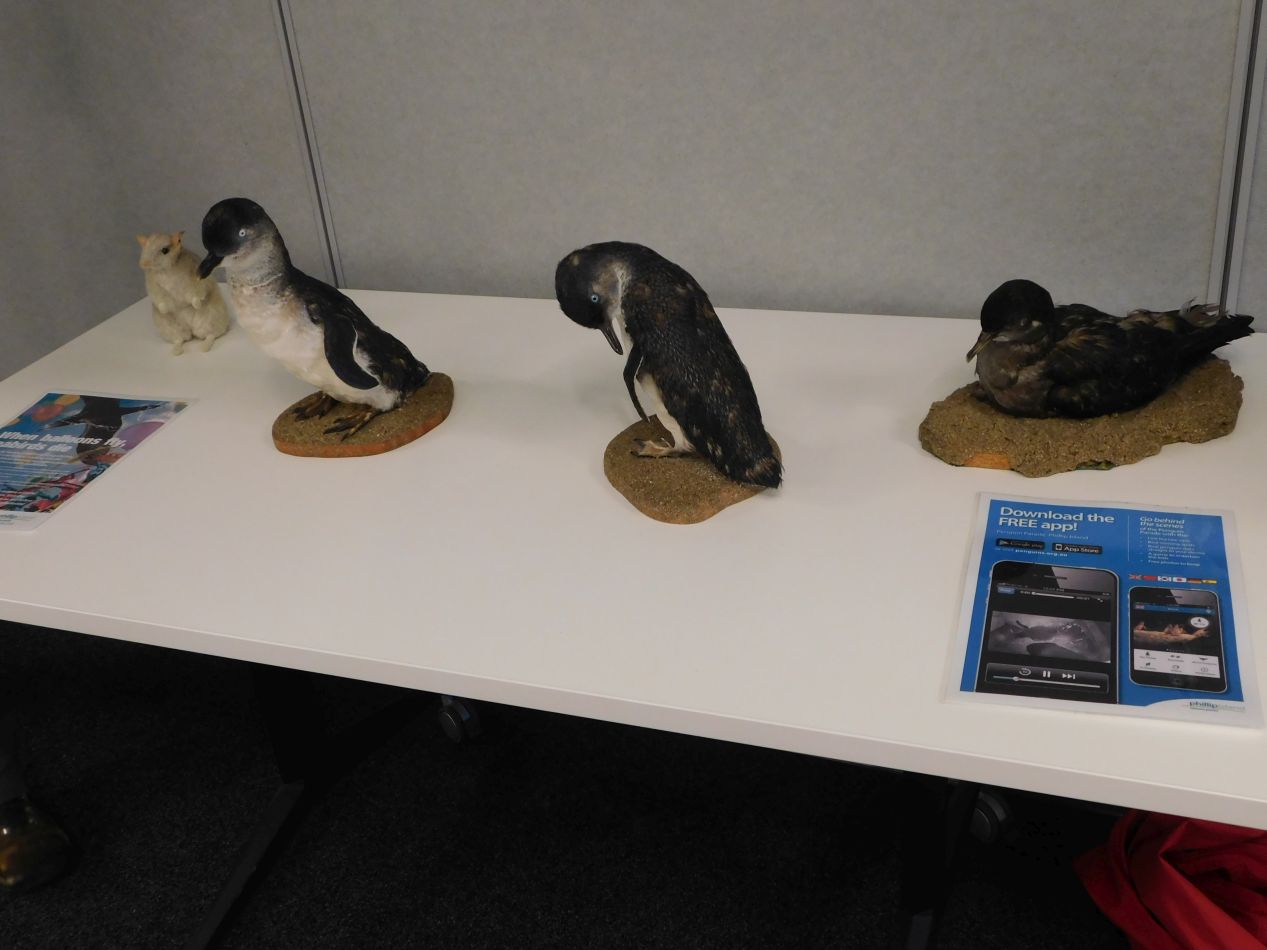
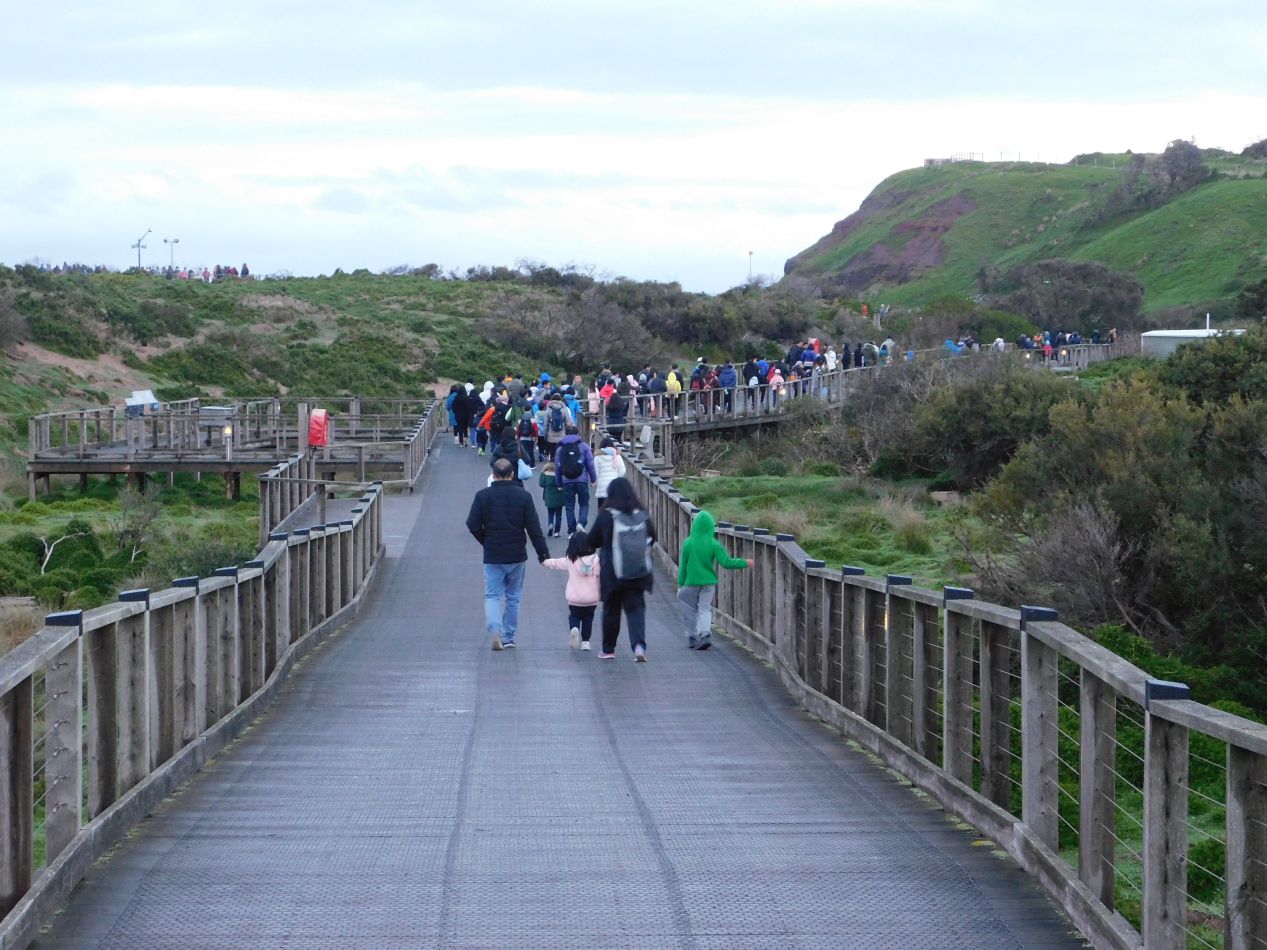
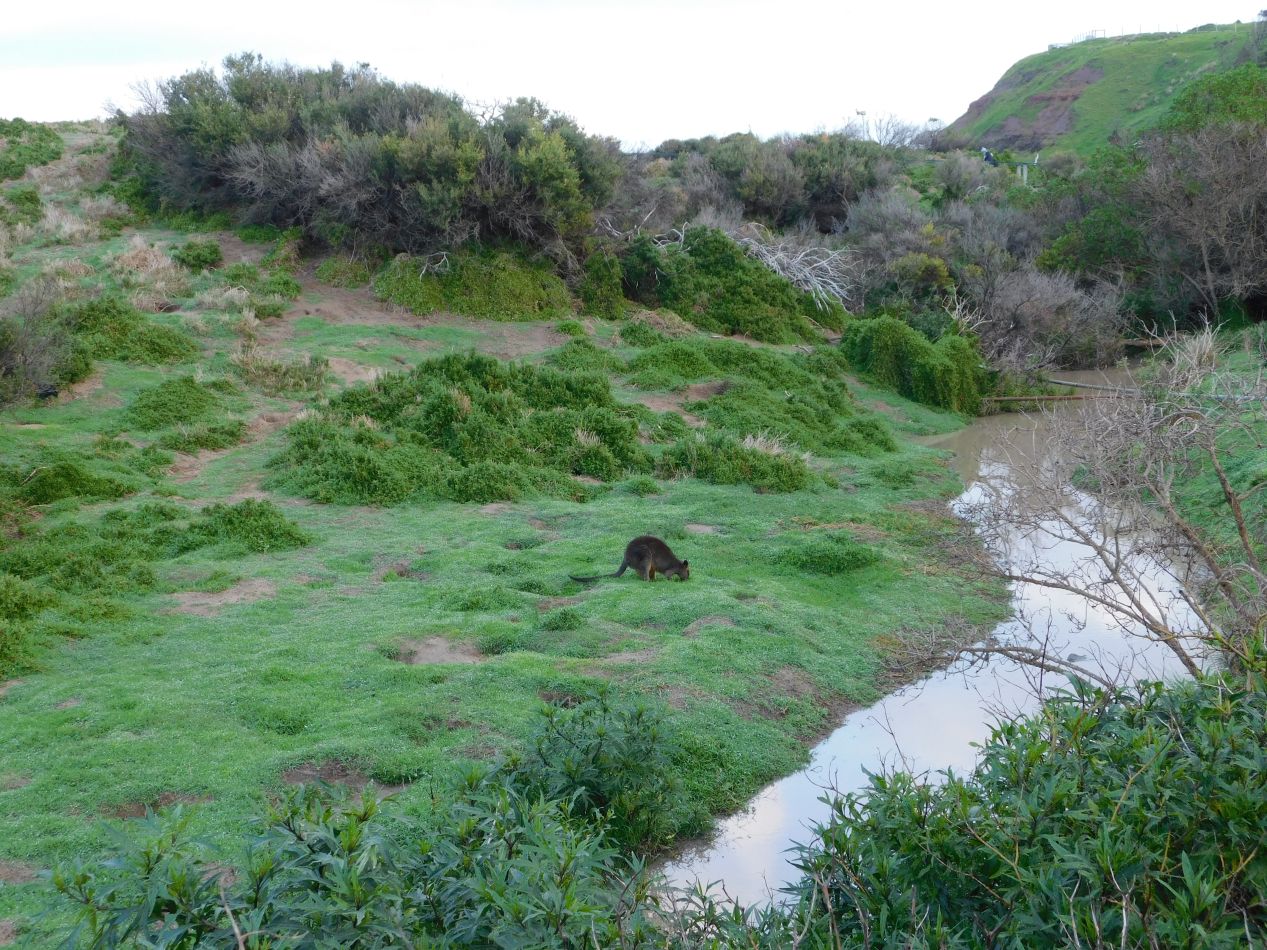

As the sun continued to set and the light faded, we were eventually ready for our tour group to assemble. We were ushered into a back room for a short background primer about the penguins, complete with small taxidermy representations of what the birds looked like. The penguins that we were going to see were known as "Little Penguins" (Eudyptula Minor), the smallest of the 17 penguin species, who only reached an average height of 33 cm / 13 inches. These guys are small enough that flying birds of prey are a serious threat, and therefore they only leave the safety of the water at nighttime when it's harder for them to be spotted. We put on radio headsets to make communicating easier and then headed out as a group towards our viewing platform. Even here in the winter season the place was packed with tourists, the formerly empty Penguin Parade building swelling with visitors arriving for the evening show. As we headed back out onto the wooden boardwalk, we spotted more geese along with several wallabies. These creatures were absolutely adorable as they hopped about (and yes, they really do hop!) nibbling at some of the plant life that grew along the shore. Penguins and wallabies living together peacefully, what an odd place to visit.
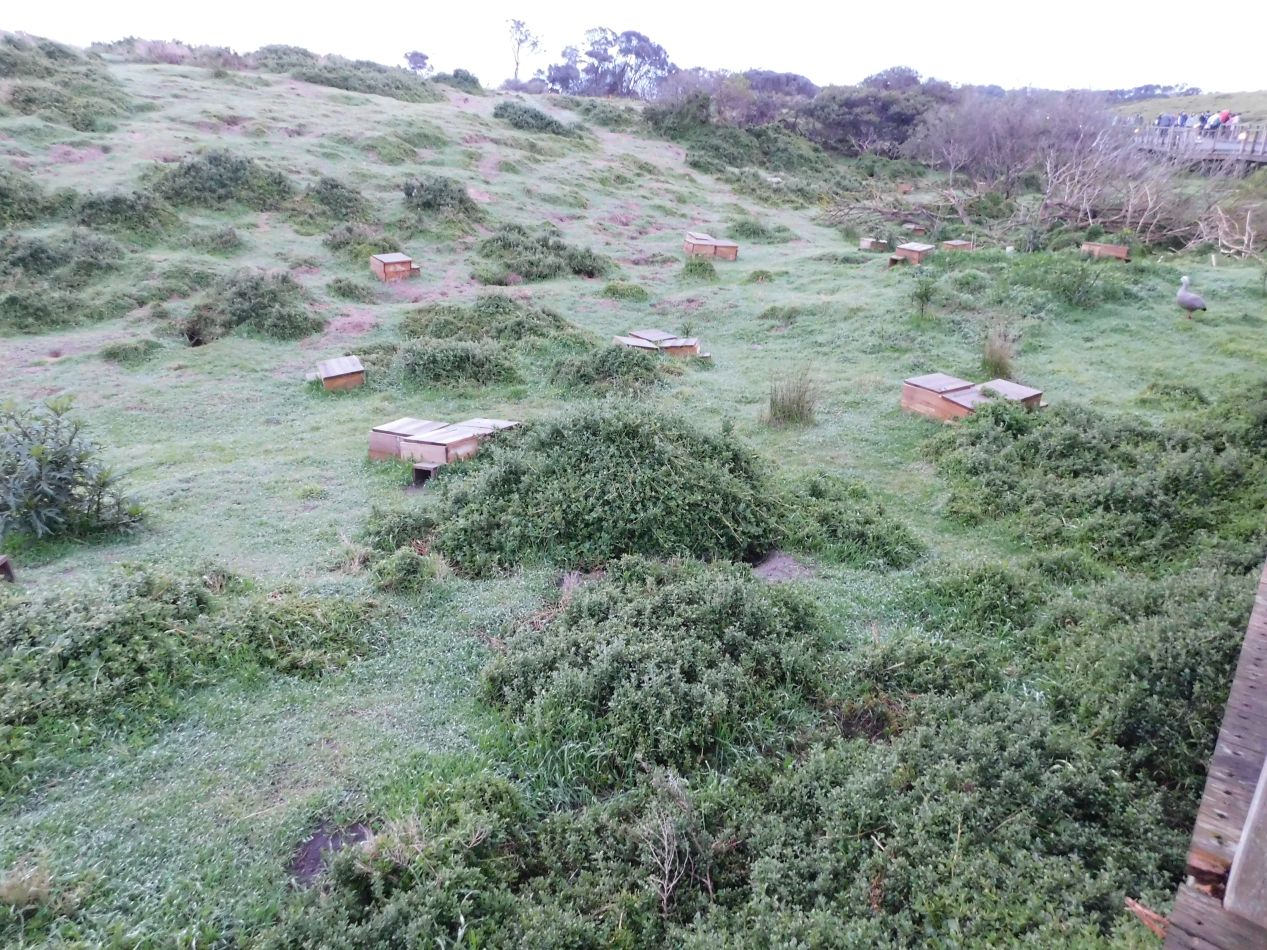
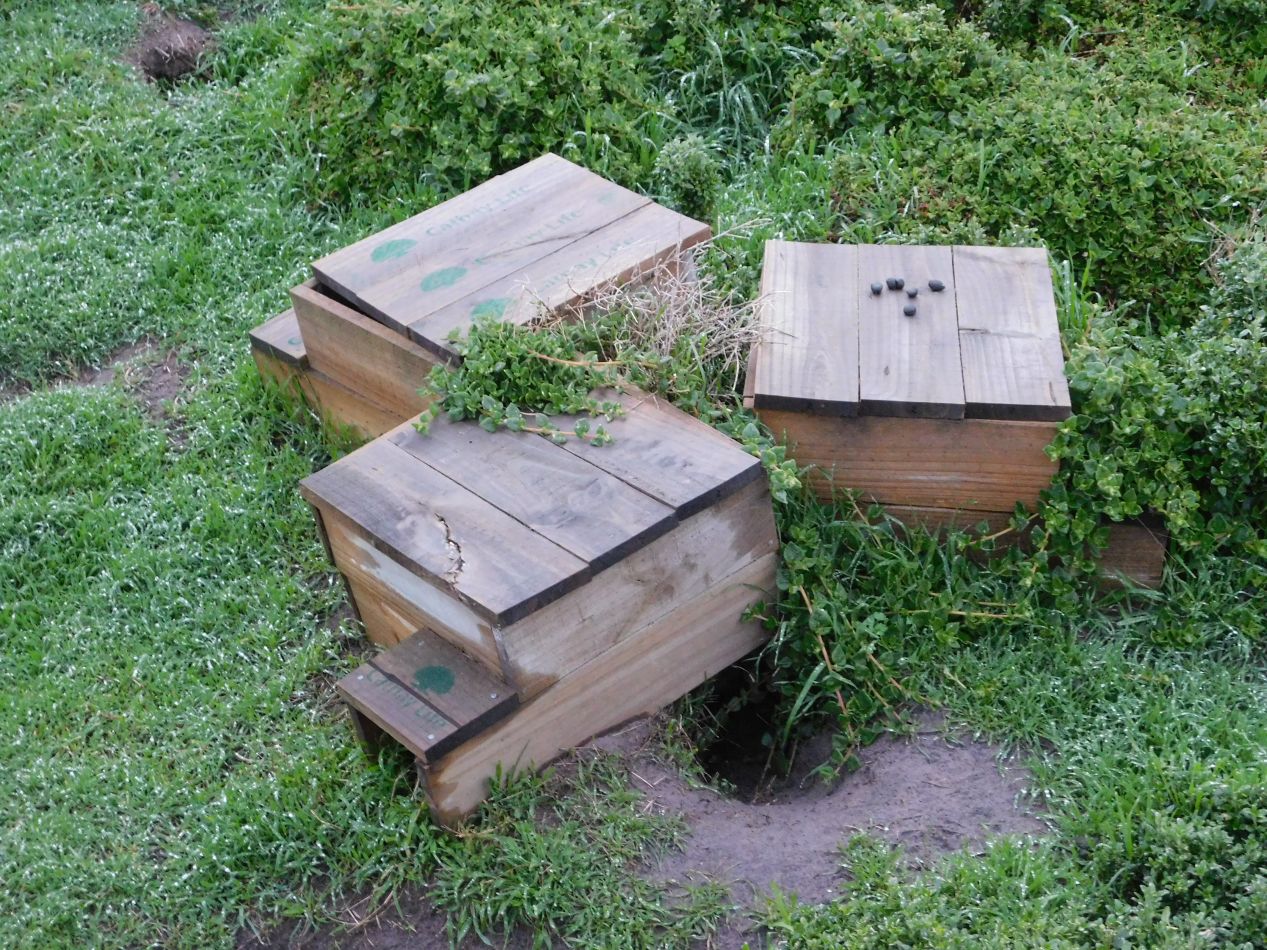
Here's a close up rendition of the little huts where the penguins live on shore. They are perfectly able to build natural shelters for themselves, and the hills along the shore were full of little tunnels that the penguins had dug, but the local staff also likes to set out these living environments to help their eggs and chicks have a better chance of surviving. Phillip Island has the largest colony of penguins in Victoria, with an estimated 32,000 penguins using this spot as their breeding grounds. The penguins spend most of their lives at sea and only return back to land roughly once every three weeks for some rest and relaxation. I was somewhat stunned to discover just how many penguins show up at the Penguin Parade on a given night; there was a sign stating that 786 penguins had been counted the night before (!) and during the summer months it's not uncommon to have as many as 2000 appear. For some reason I'd been thinking that there would be more like 50-100 penguins here. Nope, there were a lot more than that to be seen.
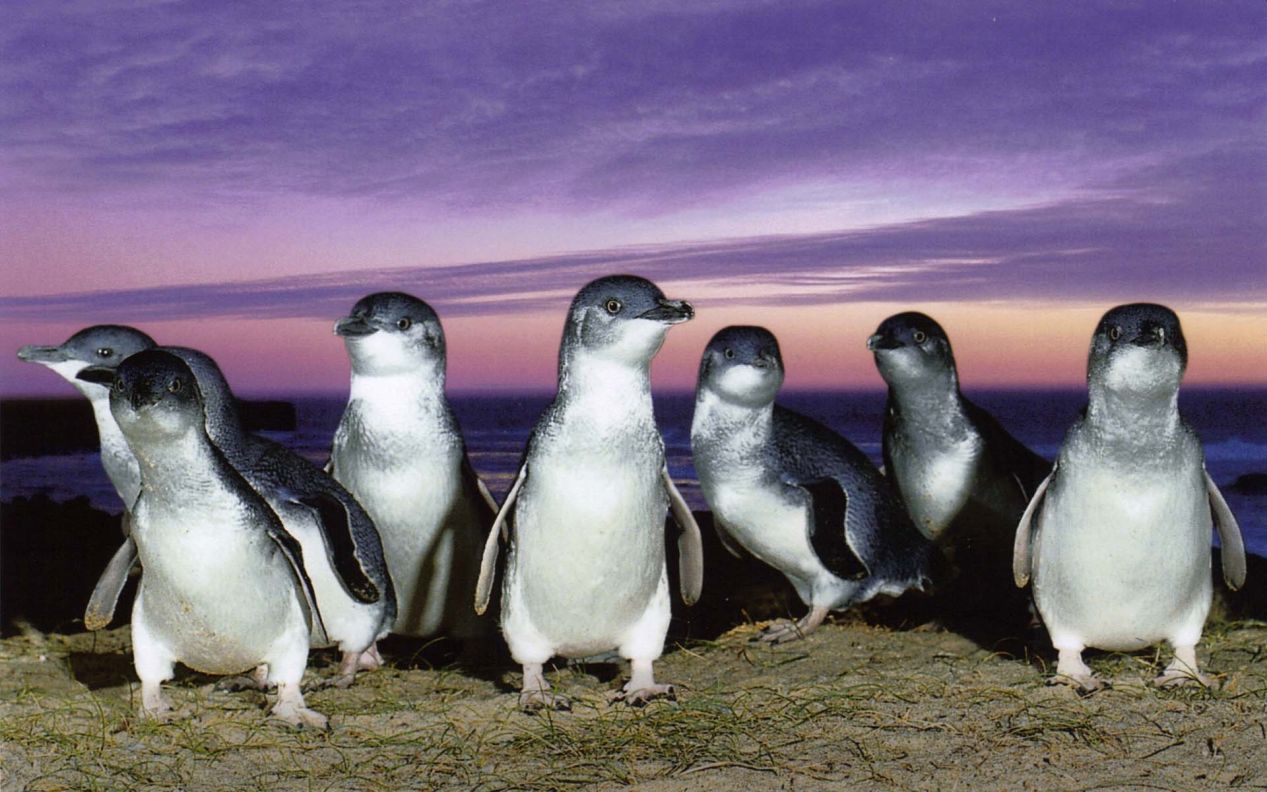

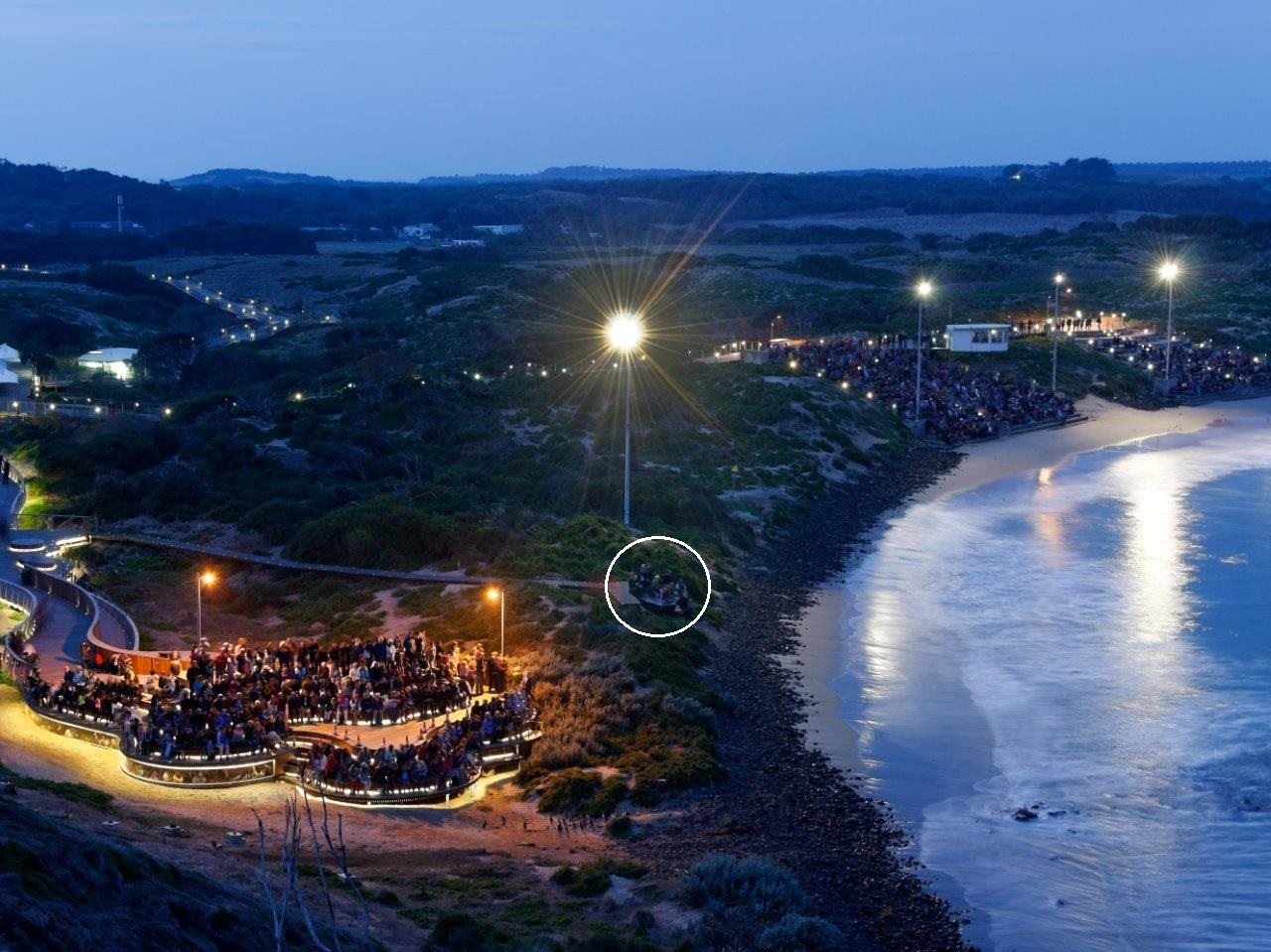

We watched the Penguin Parade from the small platform that I circled in white above. Now you are not allowed to take any pictures of the penguins as they come ashore, as the light from cameras can damage their vision, even with the flash turned off. (Naturally there were a handful of jerks who ignored this and we spotted snapping pictures anyway; unfortunately there are too many people for the staff to stop everyone from taking quick shots with their phones.) As a result, all of the pictures above are stock images taken from Google as opposed to our own pictures. The penguins didn't start to emerge from the water until it was completely dark, and when they did step out of the waves, they would only do so in large groups of several dozen penguins at a time. The birds would bunch up together and then suddenly make a break for it, racing across the sands as fast as their tiny little legs could carry them. Once they reached the brush at the top of the beach, they would go back to walking again and clearly started to relax. We spent a good half hour watching group after group of penguins follow this same process, which never ceased to be amusing. Some of the penguins were much braver than others and I have no doubt that they had their own personalities.
The best part of the Penguin Parade experience came after the birds had returned to land. The clusters began to break up as each bird walked back to its own individual nesting area; they apparently have no trouble remembering their exact spot and sometimes have to walk long distances to get there. The walking motion of the penguins was both inefficient and adorable, as the birds (clearly designed for swimming and not walking) slowly waddled their way across the ground. Their tiny little feet made a delightful "squish squish" sound as they padded across soil wet from the day's rainfall. We were able to get much closer to the penguins as they walked back to their homes, literally close enough that we could have reached over the wooden fence and touched them. The penguins were quite loud as well, chattering with one another as they walked. Our guide explained that this is the most social time for the penguins, and that sometimes they'll detour away from their homes to spend hours in the company of other birds having a "penguin party" before going back to rest. There are very few things that are cuter to watch than dozen and dozens of one foot tall penguins waddling past you on their way home.  We had a total blast and can't recommend this experience highly enough to others. A trip to Melbourne is worth it just for this attraction alone.
We had a total blast and can't recommend this experience highly enough to others. A trip to Melbourne is worth it just for this attraction alone.



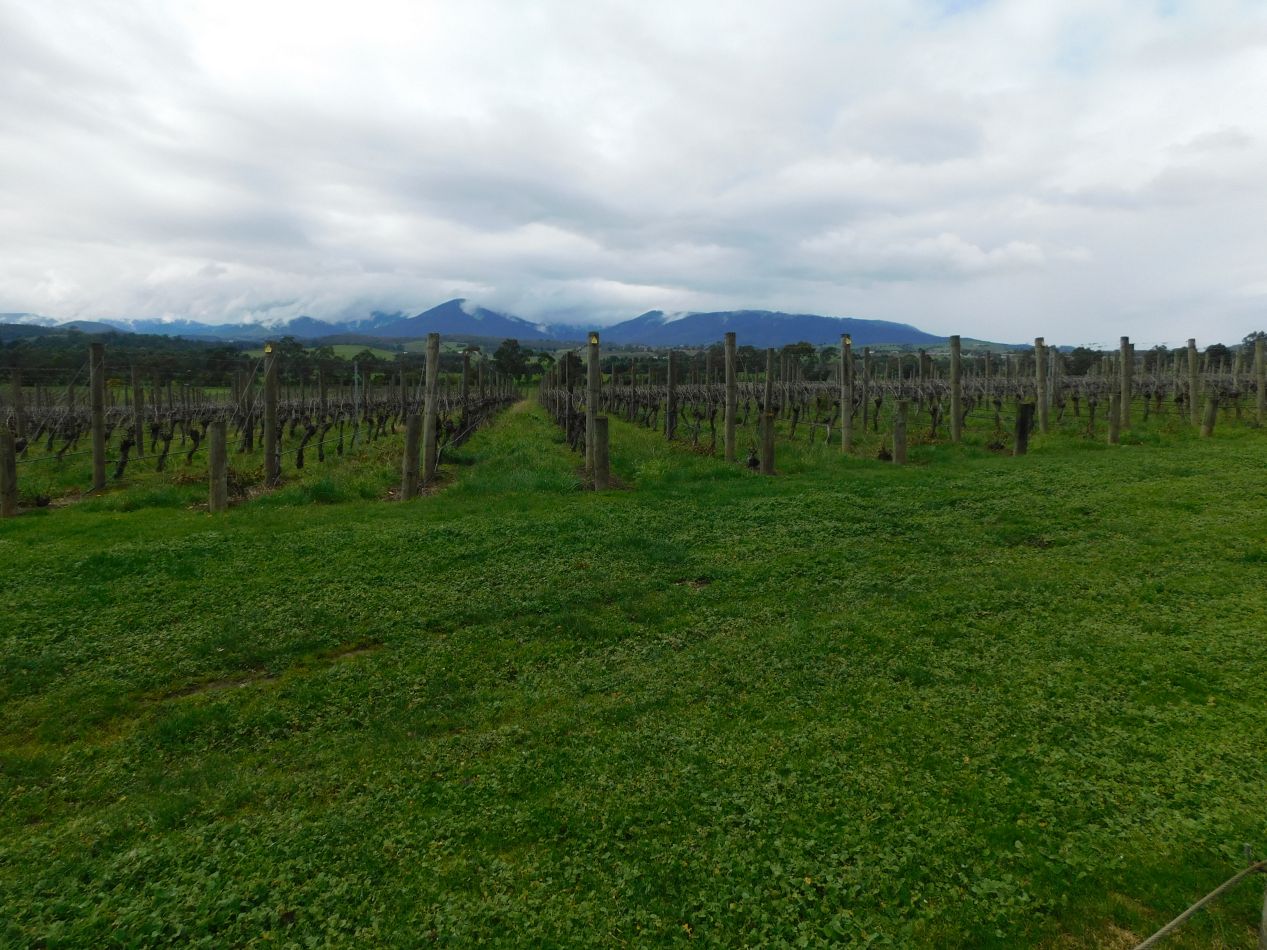
We drove back to our hotel in Melbourne following the Penguin Parade, eating a later dinner back in the city. We were up again the next morning and heading off to a different area, the wine growing region known as the Yarra Valley. Due to its excellent growing conditions and close proximity to Melbourne, the Yarra Valley has become a major center for wine tourism (which is apparently named "enotourism"). We had searched online for a list of where different wineries were located and decided to do our own self-guided tour, as opposed to spending a hundred dollars or more on a bus-led touring group. Our first stop was at a winery run by the Chandon brand, a French wine company with vineyards scattered around the globe. The scenery in the Yarra Valley was spectacular, with long rows of grapes growing against a backdrop of green hills and stormy skies. The weather was misbehaving yet again but fortunately we would be mostly inside on this day and it wouldn't matter much.
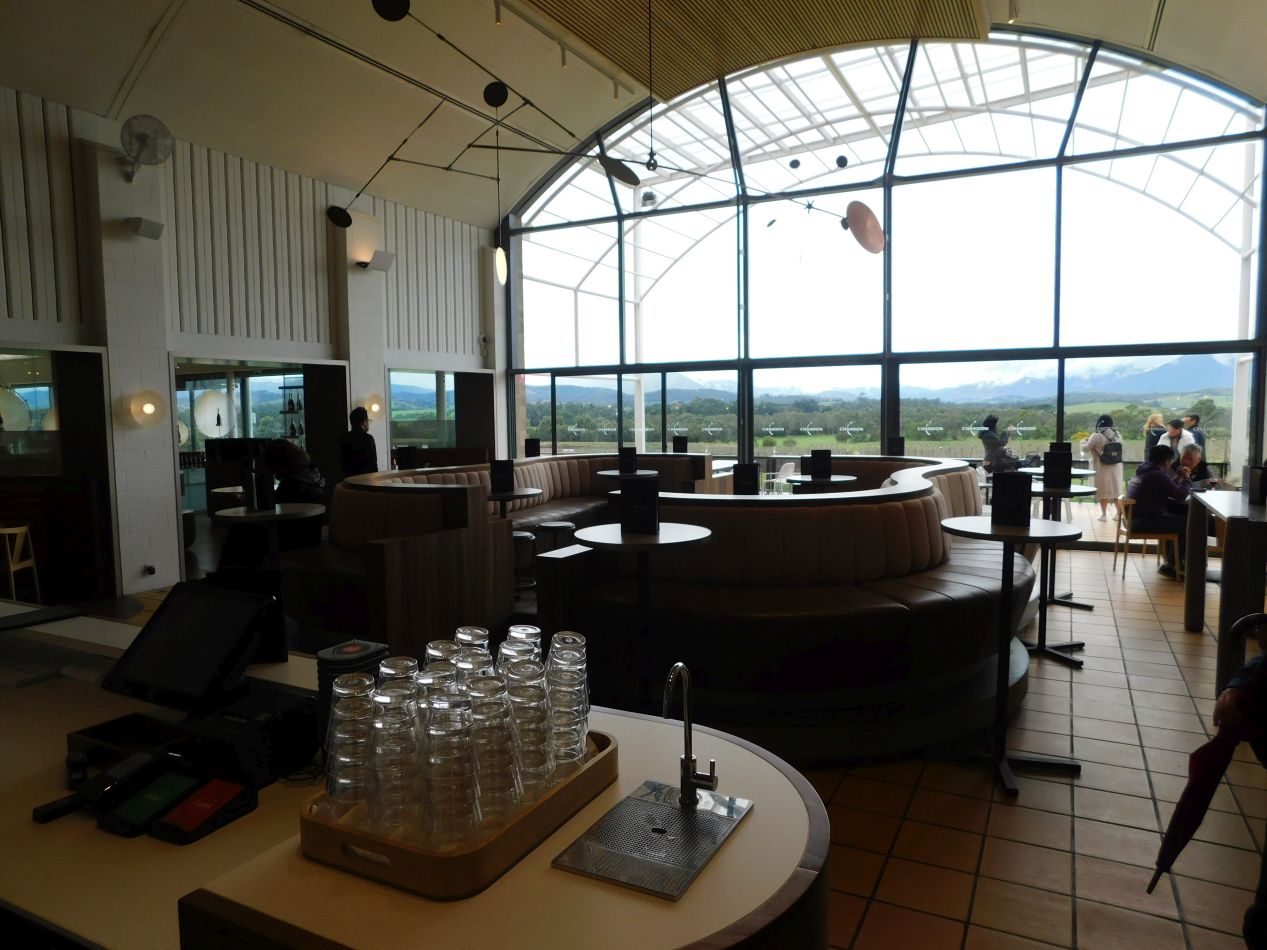

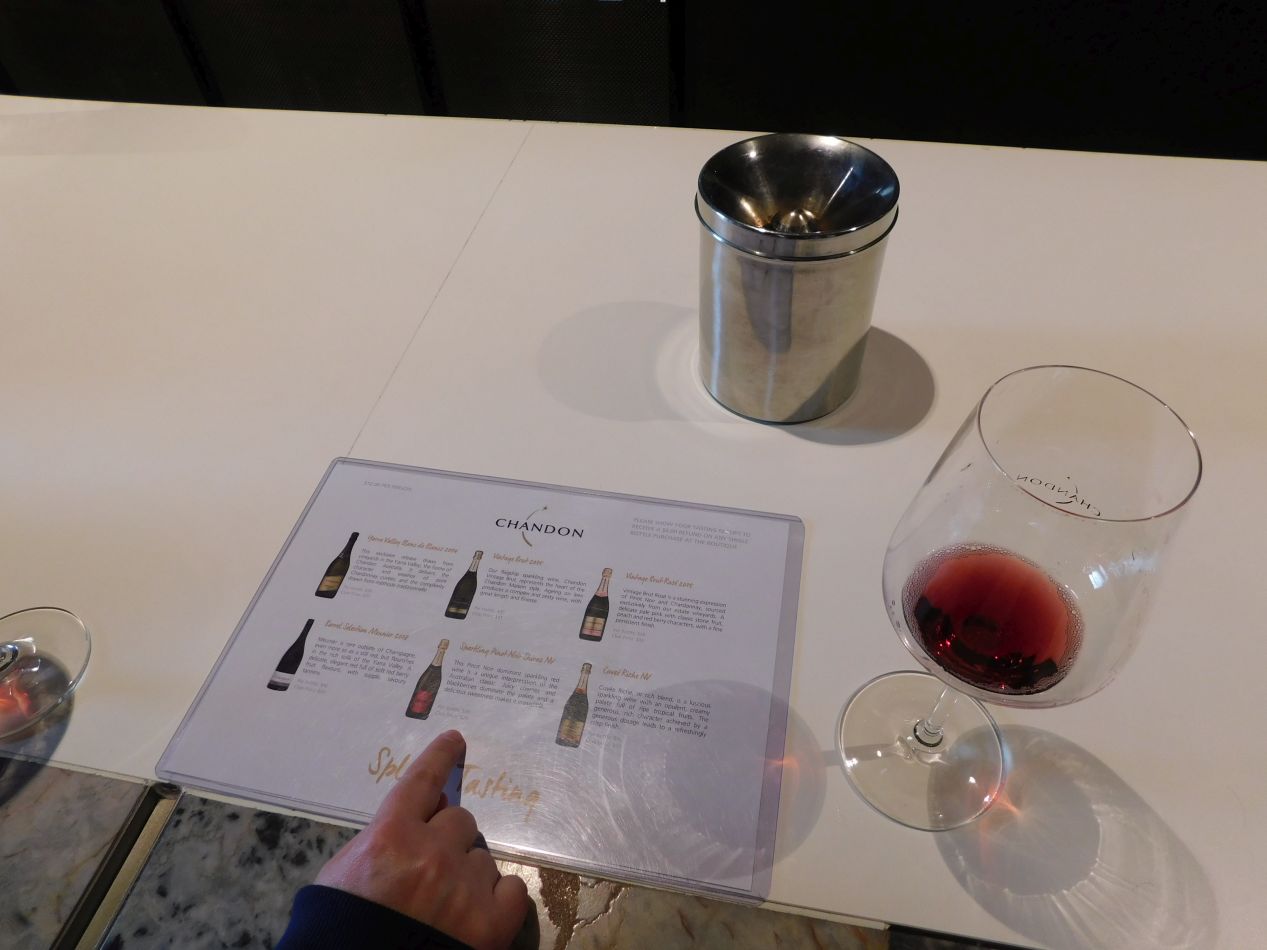

Liz and I have done a bunch of different wine tastings over the years, and it's a fun way to test out different types of wine to figure out which ones that you like the best. Typically wine tastings ask for a modest fee of $10 or $15 to sample about half a dozen different kinds of wine. We were surprised to find out that the wineries in the Yarra Valley mostly offered free tastings, amazingly just giving you samples of their wine on request with no purchase required. Chandon asked for a very nominal fee of $5 and I think they were the only winery that asked us to pay anything. Chandon was the most "corporate" of the places that we visited, with this particular vineyard very clearly being one outpost of an international business venture. It was also somewhat stuck-up and snooty in terms of how it presented itself, using the official name of "Domaine Chandon". Out of the six wines that we sampled here, we liked their sparkling red wine the best - yes, a sparkling *RED* wine! I didn't even know that such a thing existed before coming to the Yarra Valley, and it's apparently pretty rare outside of this region. Very interesting stuff.


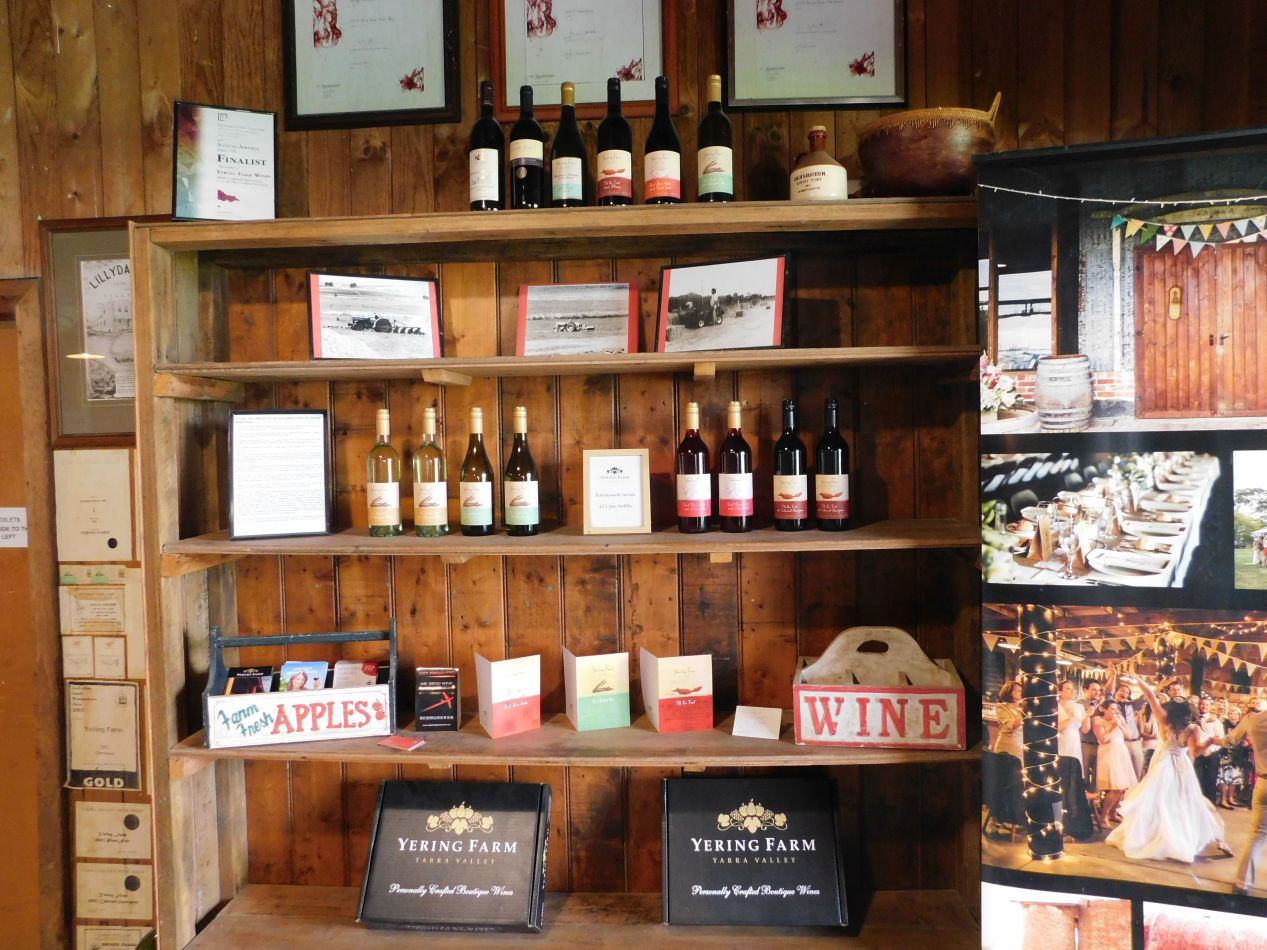

As a total contrast to Chandon, we next stopped at the nearby Yering Farm Wines for another tasting. This was a much smaller operation that still seemed to be largely run as a family business, certainly no one asking us to join the "etoile" wine club here. The tasting room at Yering Farms was built out of a converted barn and had the rustic "shabby chic" vibe that was popular on the various home design networks at the time of our visit. There was a real down-home feel to this place and the staff couldn't have been friendlier to us. When they found out that this was our honeymoon they refused to let us pay for a tasting; we were literally trying to give them money because we were enjoying the experience and they wouldn't take it. I particularly liked the dessert wine and ciders that they had on the menu, which we were again able to sample for absolutely nothing. This is the kind of place where we normally would have purchased at least one bottle as a means of supporting them, and couldn't do so because of the need to fly overseas the next day. We would definitely recommend Yering Farms to anyone who's interested in checking out wineries in the area - this place could not have treated us any better.


Two quick pictures here of the lunch that we ate at a restaurant named the Coldstream Brewery. The name evidently came from the little town of Coldstream where it was located, but that didn't answer our main question: why was there a statue of a shivering naked man on top of the restaurant?! I'm sure it made sense to the locals. Liz had a burger and I enjoyed an excellent pizza, as the food was a lot more comfortable than the poor mascot outside. If I look a little bit more silly than normal in these pictures, well, we had been doing a good bit of wine tasting.
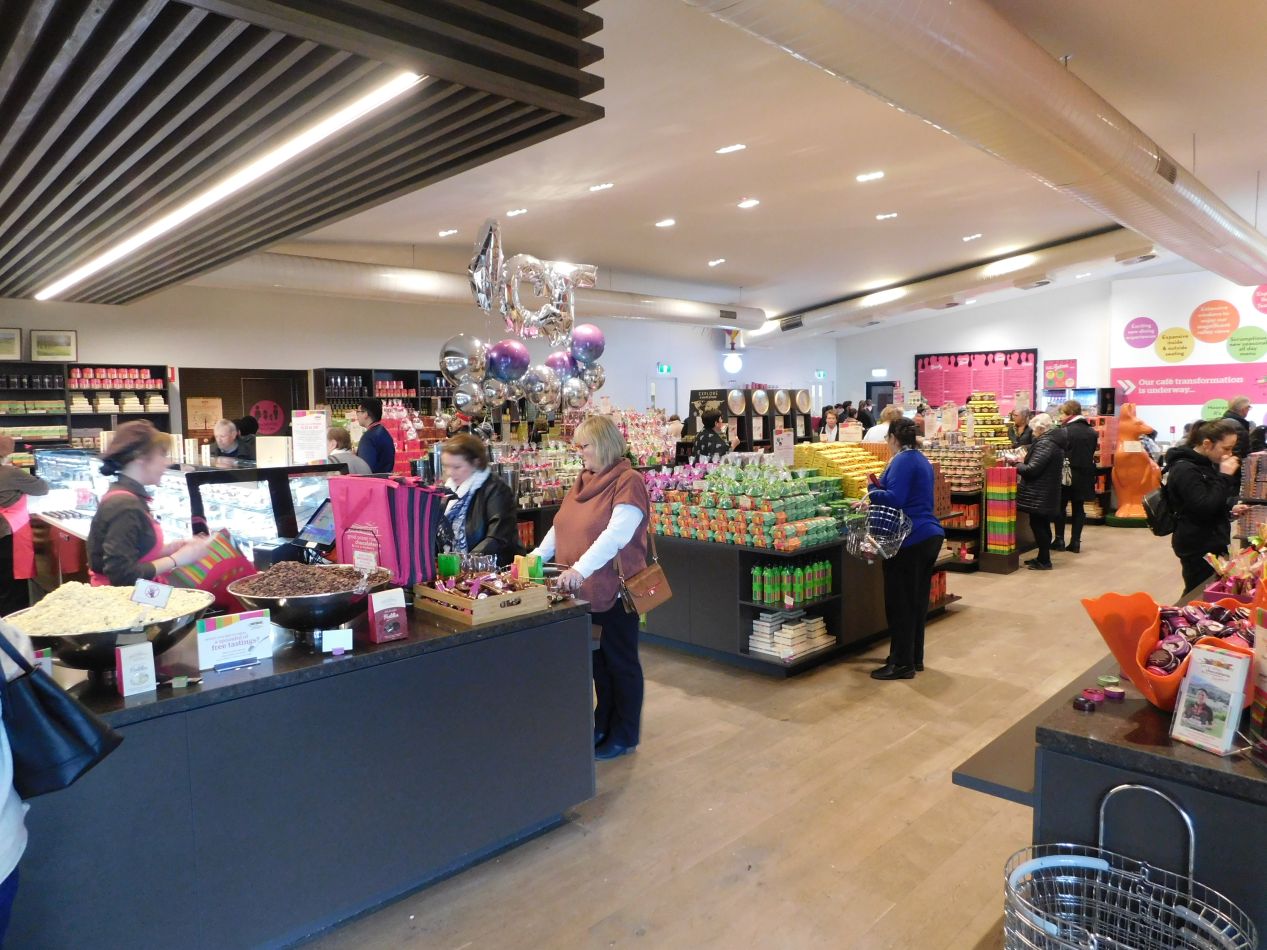

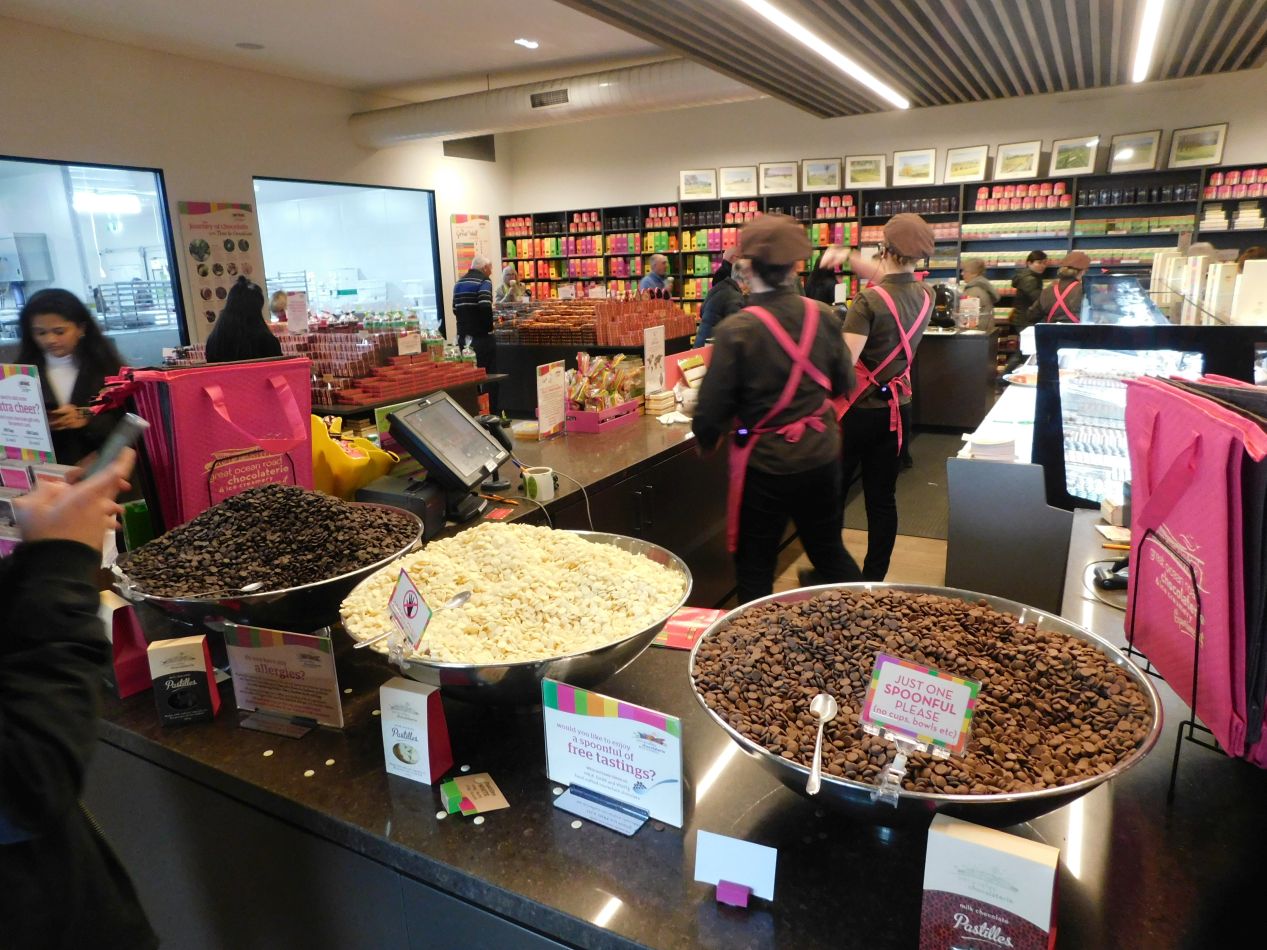

We stopped next at another one of the tourist draws in the area, the Yarra Valley Chocolaterie & Ice Creamery. There were a number of tour buses pulled up in the parking lot here as they ferried visitors from one winery to another, and the overall experience was similar to the Amazing World of Chocolate from the previous day on Phillip Island, if a little bit classier. Tourists seem to like making stops at chocolate stores, who knew. The best feature of this place was the huge bowls full of chocolate samples in three different flavors: white chocolate, milk chocolate, and dark chocolate. We snapped a picture of the charming pastoral scenery outside the chocolaterie, nothing but farms and vineyards stretching in every direction. This area looked a lot like the Shire as depicted in the Lord of the Rings movies, and that made sense because this part of Victoria is supposed to have a climate similar to New Zealand, which is of course where those movies were filmed.

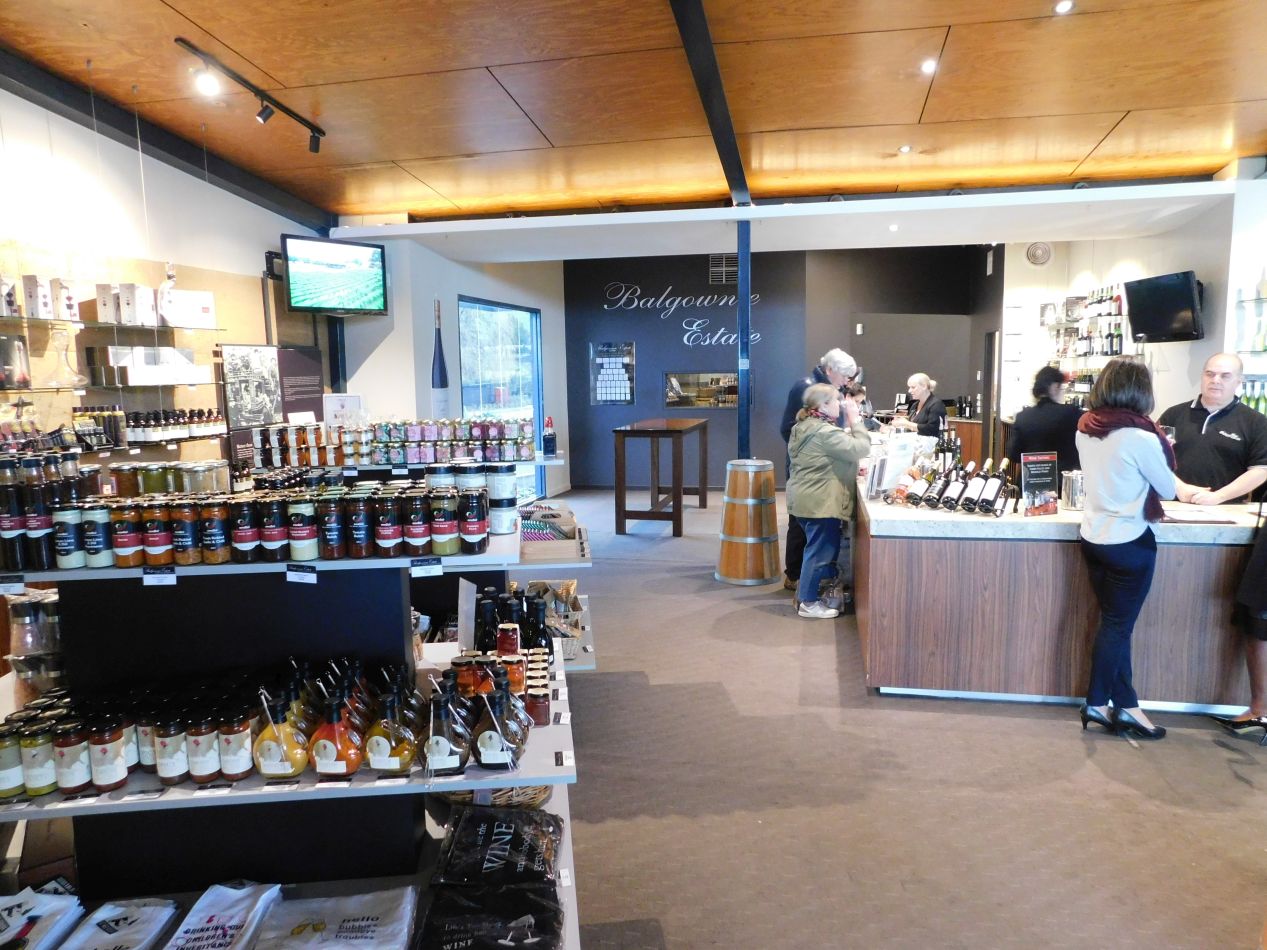
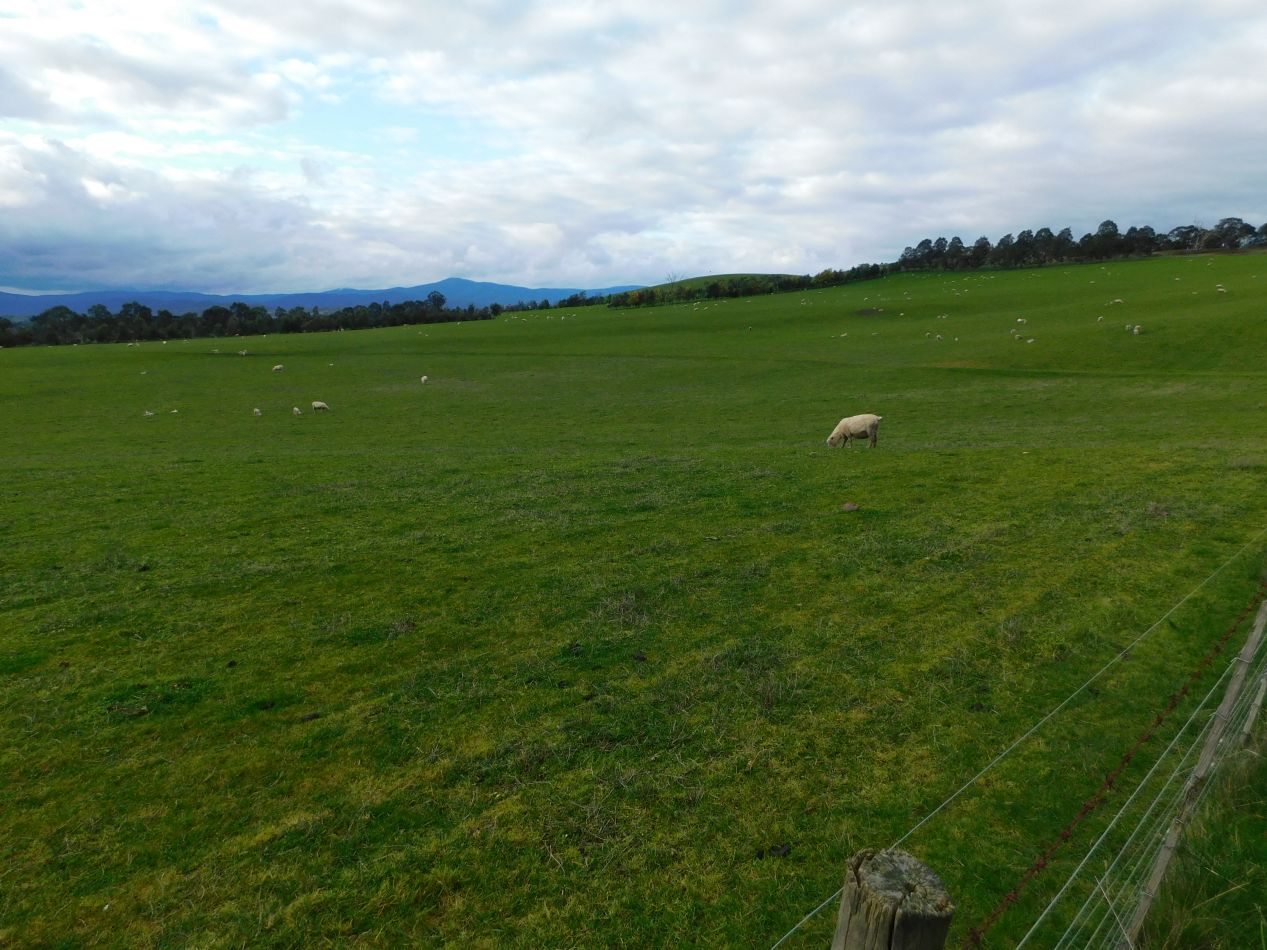
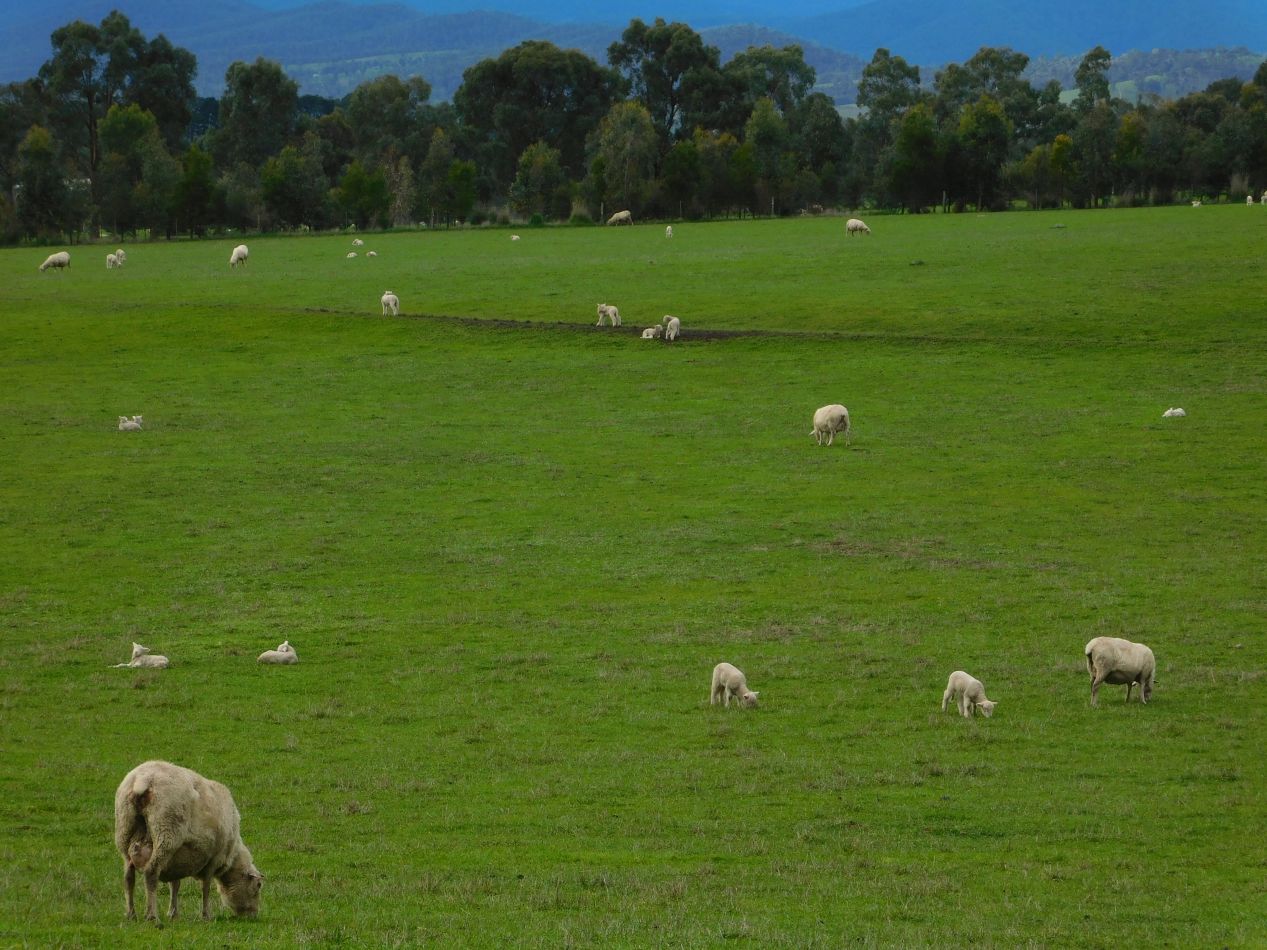
Our third wine tasting took place at the nearby Balgownie Estate, which was somewhere in between Chandon and Yering Farms in terms of formality. Balgownie was a resort and spa facility that also happened to produce wine as somewhat of a side product, and their tasting room had a lot of information about hosting weddings or other formal receptions. We were again charged nothing and had a very friendly server for our tasting, but otherwise Balgownie didn't stand out as being particularly remarkable. I included some pictures here of the many, many sheep that we spotted while driving between these various vineyards. (I did mention that the climate of coastal Victoria is similar to New Zealand, didn't I?) This was also a major wool-producing region and we even spotted a Great Pyrenees watchdog keeping an eye on the flocks at one point. I wish that we hadn't been driving the car and could have gotten a picture of that fellow.


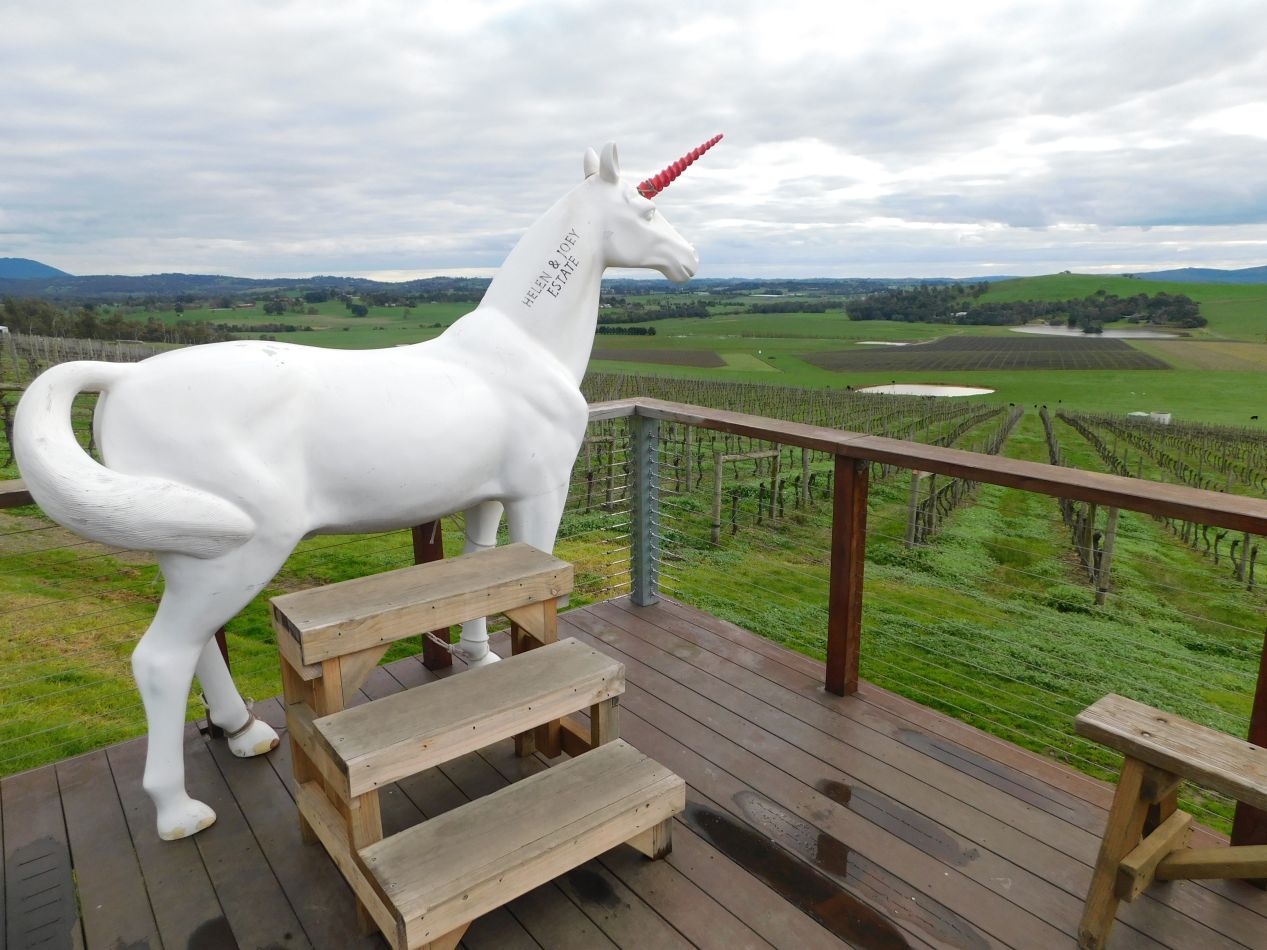

The last winery that we visited for the day was the Helen and Joey Estate, which was off by itself at the end of a long and winding dirt road. We had largely picked this place due to its unicorn logo (one of Liz's favorite animals), and they proved to have a "life-sized" model of a unicorn on their outside seating area where visitors could take pictures. It was getting later in the day at this point and the scenery continued to be lovely outside, with the sun setting behind the clouds over the long rows of grapevines.
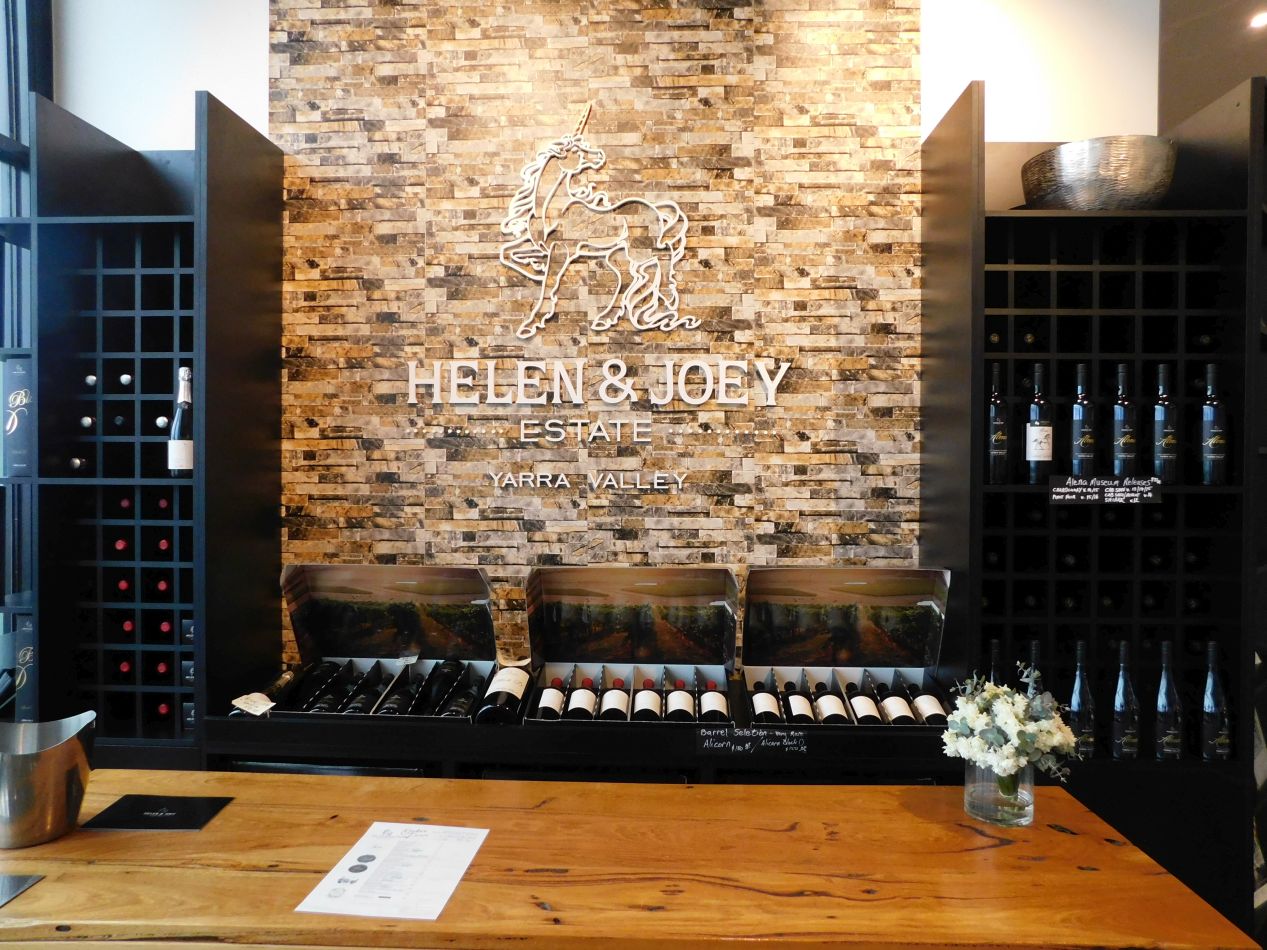
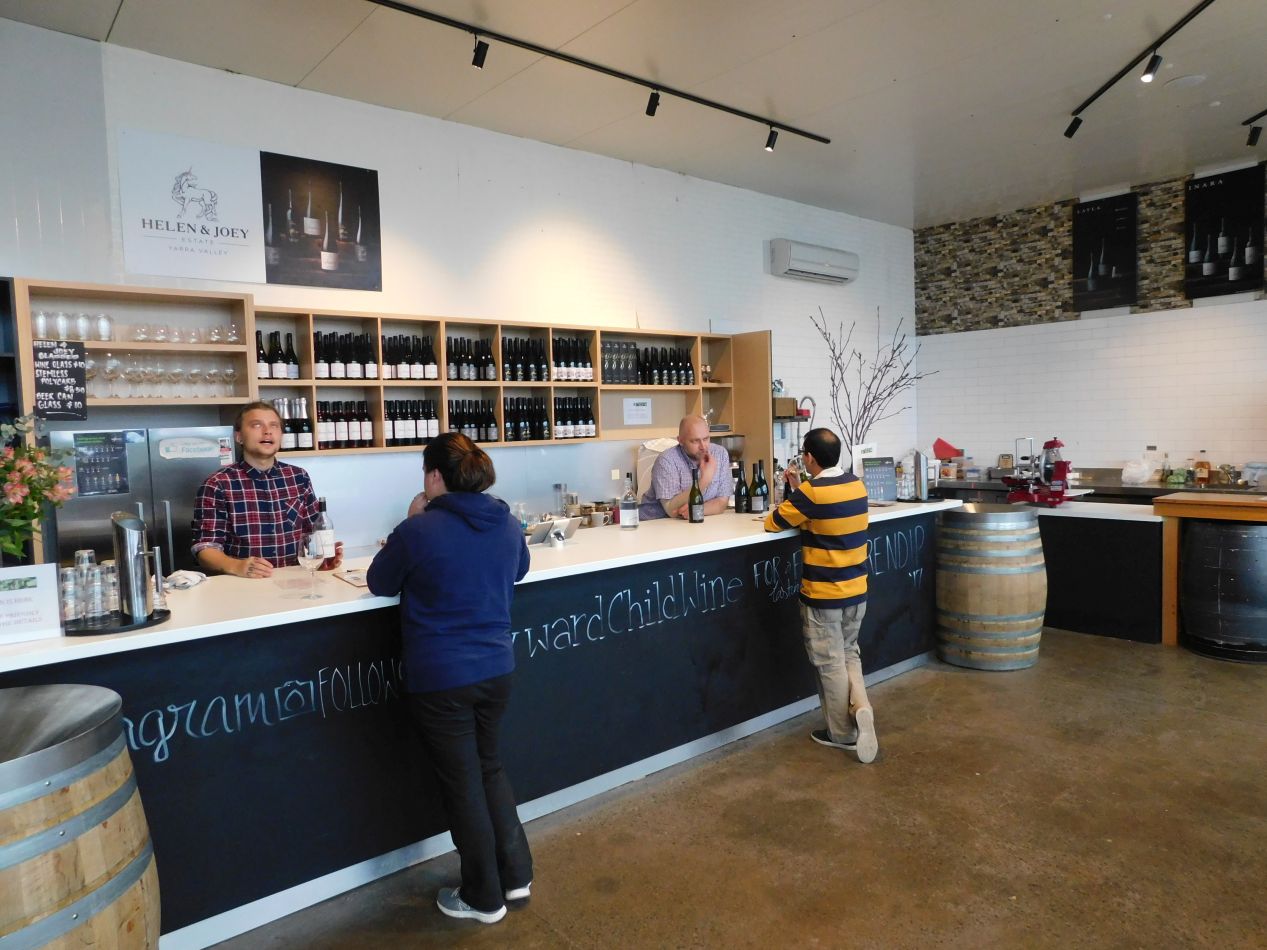
The wine tasting at the Helen and Joey Estate was an entertaining experience largely because of our server (the individual on the left behind the counter). He was extremely enthusiastic about the various wines available for tasting, to the point where he could spend five straight minutes discussing the ins and outs of that particular type of grape. Liz encouraged him to start a YouTube channel or come up with some other form of social media engagement to share that enthusiasm and deep level of knowledge about winemaking, which I think he was considering. Once again we tried to pay for the tasting and had our money refused. We would have liked to purchase a bottle of wine here as well but had no realistic method of transporting it back to the United States, and the wine wasn't so phenomenal as to try shipping it overseas.
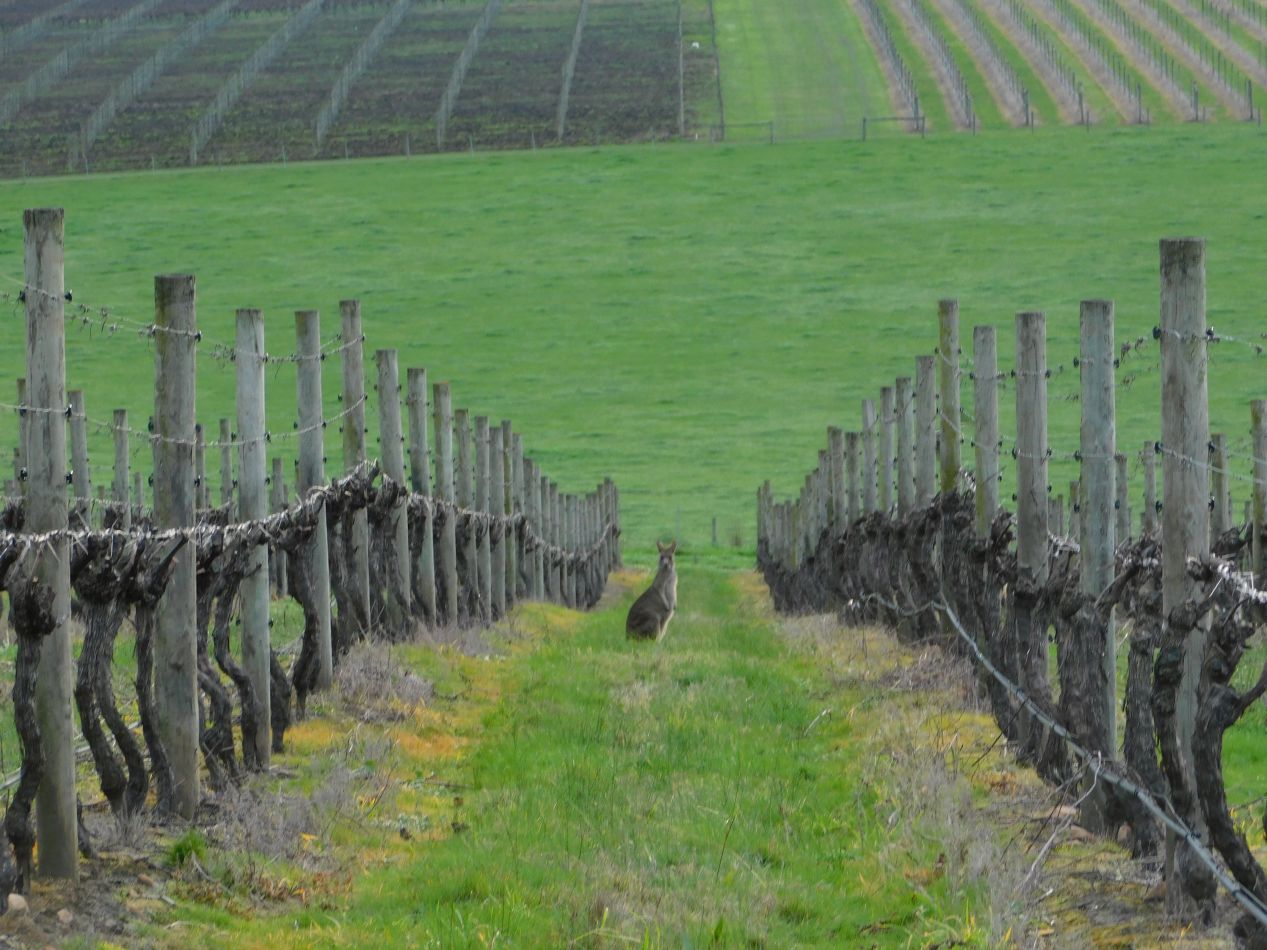



There was one last surprise in store for us as we were preparing to leave. We spotted movement down among the rows of vines as we were heading for our car, and a quick investigation revealed the culprit: kangaroos! The iconic Australian animals were hopping around between the grapes, nibbling on the grasses located in between them. I wondered if kangaroos try to eat the grapes themselves and if they're a threat to the crop each year; these are the kind of unexpected questions that pop up while traveling. Kangaroos have a slightly unnerving way of sitting back on their haunches and staring at people, which was enough to keep up from trying to get any closer. It's well known that kangaroos aren't shy about throwing kicks and punches if they feel threatened, and they have some sharp claws at the end of their paws. This was an awesome way for us to close out our time in wine country in a uniquely Australian way, with this spotting of kangaroos out among the vines. We definitely wouldn't have seen this in Nappa Valley or Champagne!

The last component of our trip involved the return journey back home. We had three total flights as we hopped from Melbourne to Los Angeles to Atlanta to Washington DC, all of which would take place in a single day according to the calendar, a day which would last for 39 hours in total. Our flight to Los Angeles would take 14 hours and we would actually arrive before the time of our takeoff; crossing 15 timezones and the International Date Line makes for some weird outcomes. Unlike the trip westward across the Pacific, when it was important to get some sleep in order to adjust to the changing local time, for the return trip eastwards it was better to try and stay awake the entire time since we would be returning home late at night. I watched a bunch of movies and managed to stake awake for the entirety of the lengthy transoceanic flight. We had to go through customs at LAX and then take our two additional flights, both of which were delayed, although fortunately everything did eventually manage to leave without anything too serious happening. We arrived back in DC shortly before midnight local time, which would have been about 3:00 PM back in Melbourne on the next day. I don't even remember which airport we took this picture in since everything ran together into a blur over the course of this extremely long day.
That was the conclusion of our trip to Australia. Despite often having poor weather and suffering through some truly terrible airport bad luck, this was another experience of a lifetime that we were profoundly lucky to be able to enjoy. We had the chance to cuddle with koalas, take a helicopter flight over Brisbane, scuba dive on the Great Barrier Reef, ride horses on the beach, climb to the top of Sydney Harbor Bridge, watch penguins and kangaroos frolicking in their natural environment, and visit a whole bunch of uniquely Australian museums and government buildings. Given the three weeks of time that we had to spend, we felt that we'd been able to see a wide range of the country's most famous destinations, covering pretty much the whole eastern coast from Cairns down to Melbourne. If we'd been able to extend our time by another week or two, we would have loved to visit Tasmania and then hop over to Adelaide in South Australia, or head into the wilds of the Northern Territory to Darwin and Uluru. Australia is really, really big though and it's tough to get to all of these places given how far apart they are. We were very happy to have been able to experience as much as we did in just three weeks of time.
Thanks as always for reading, and best of luck on being able to put together your own trip to this magnificent country.



